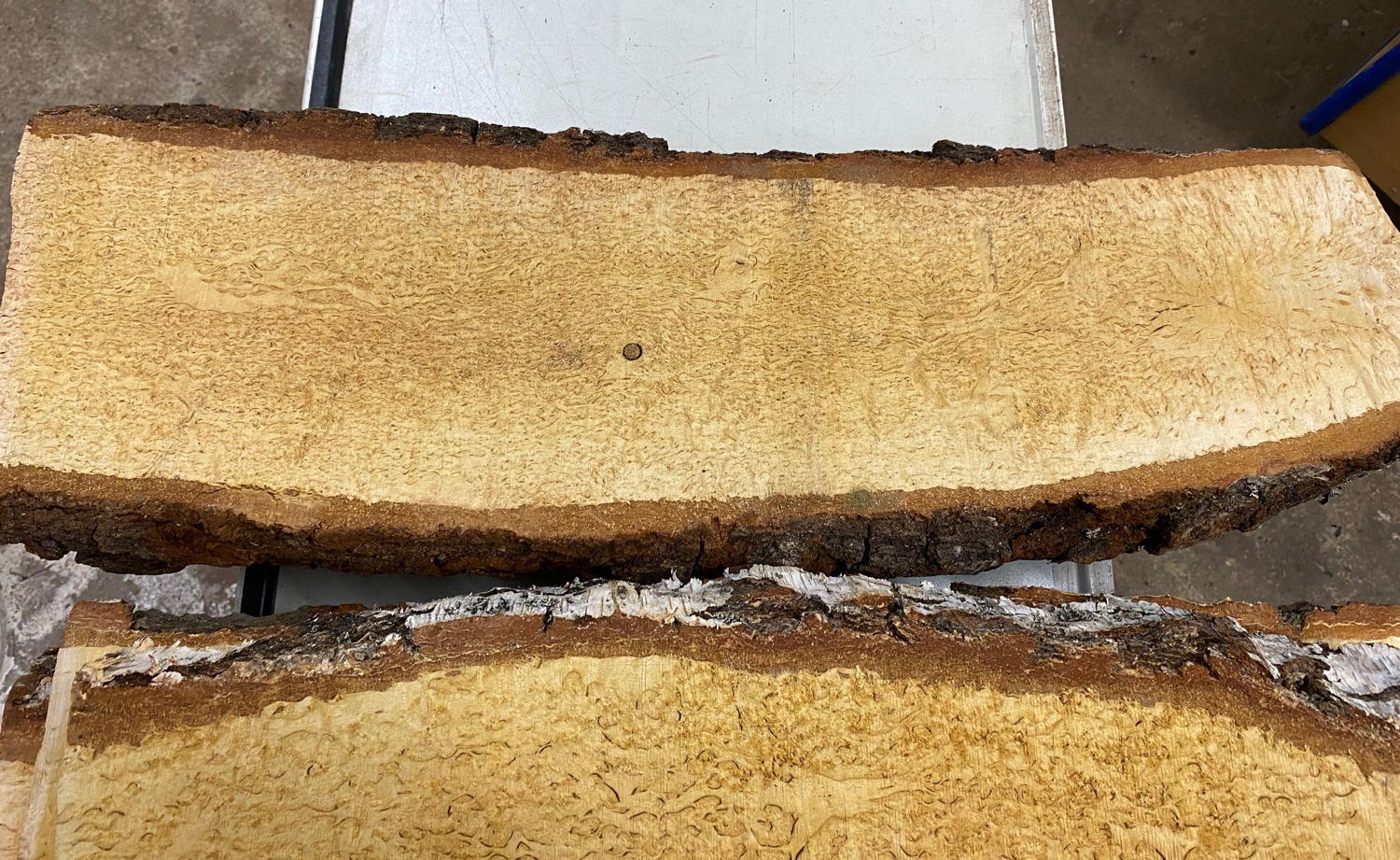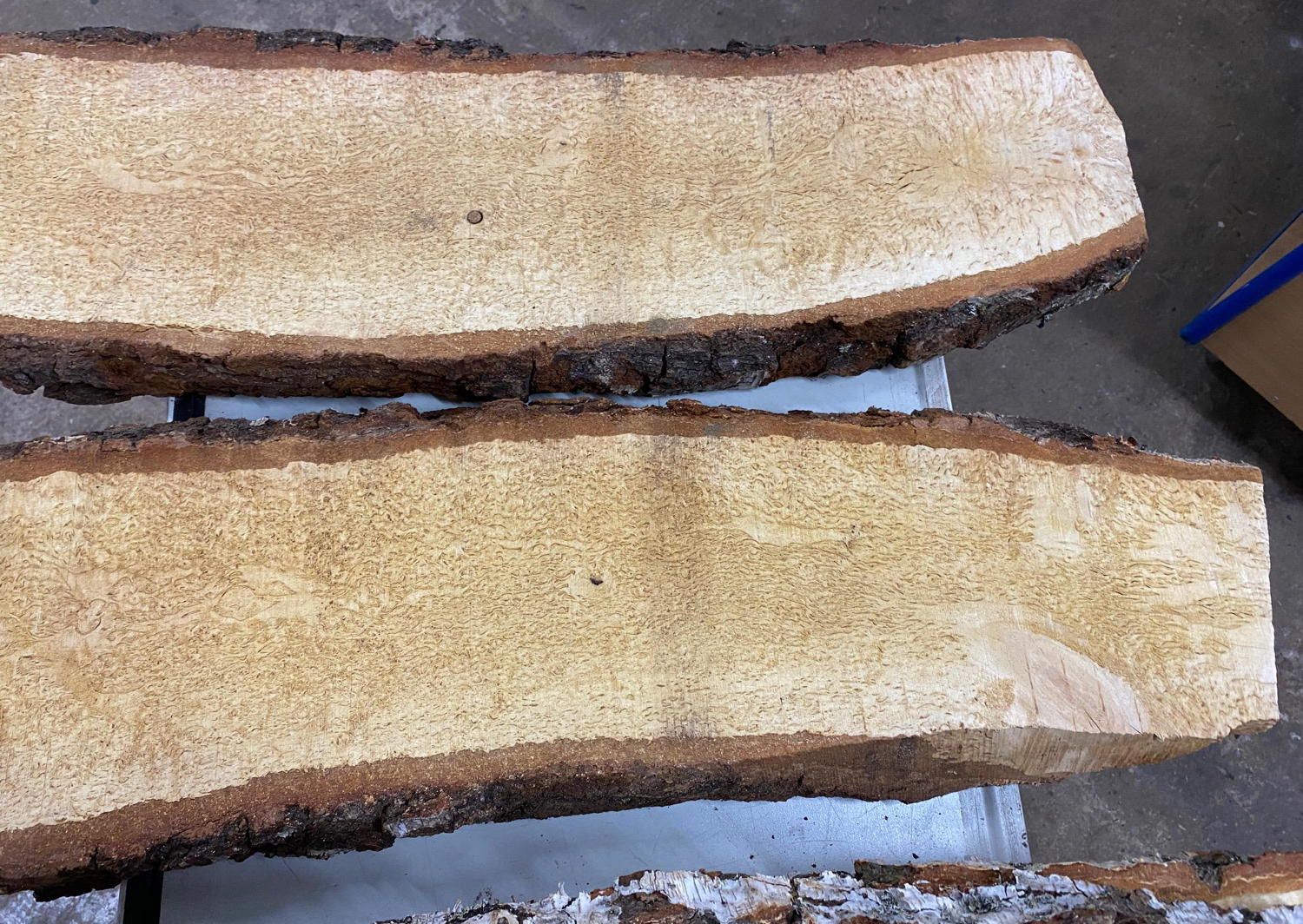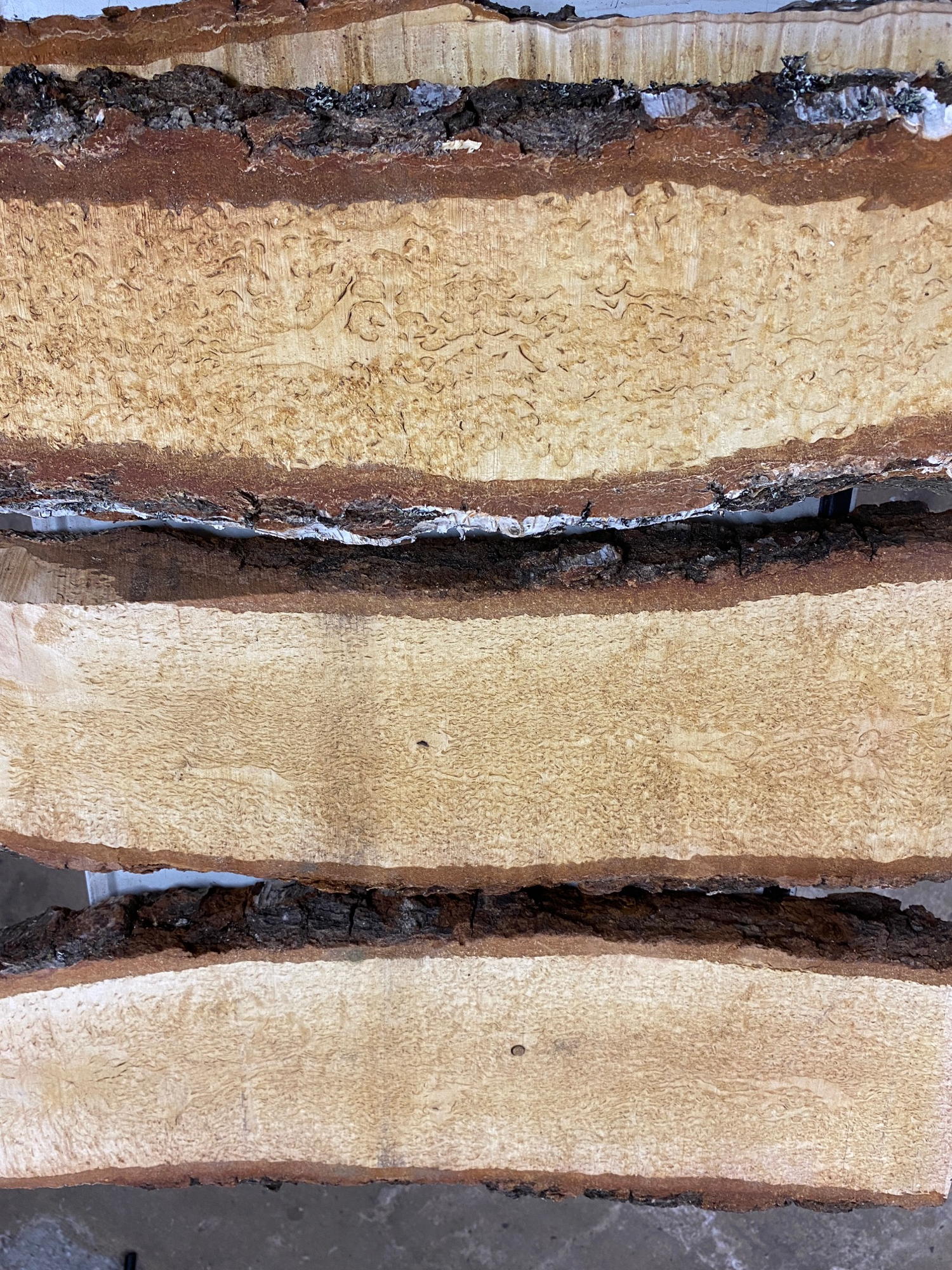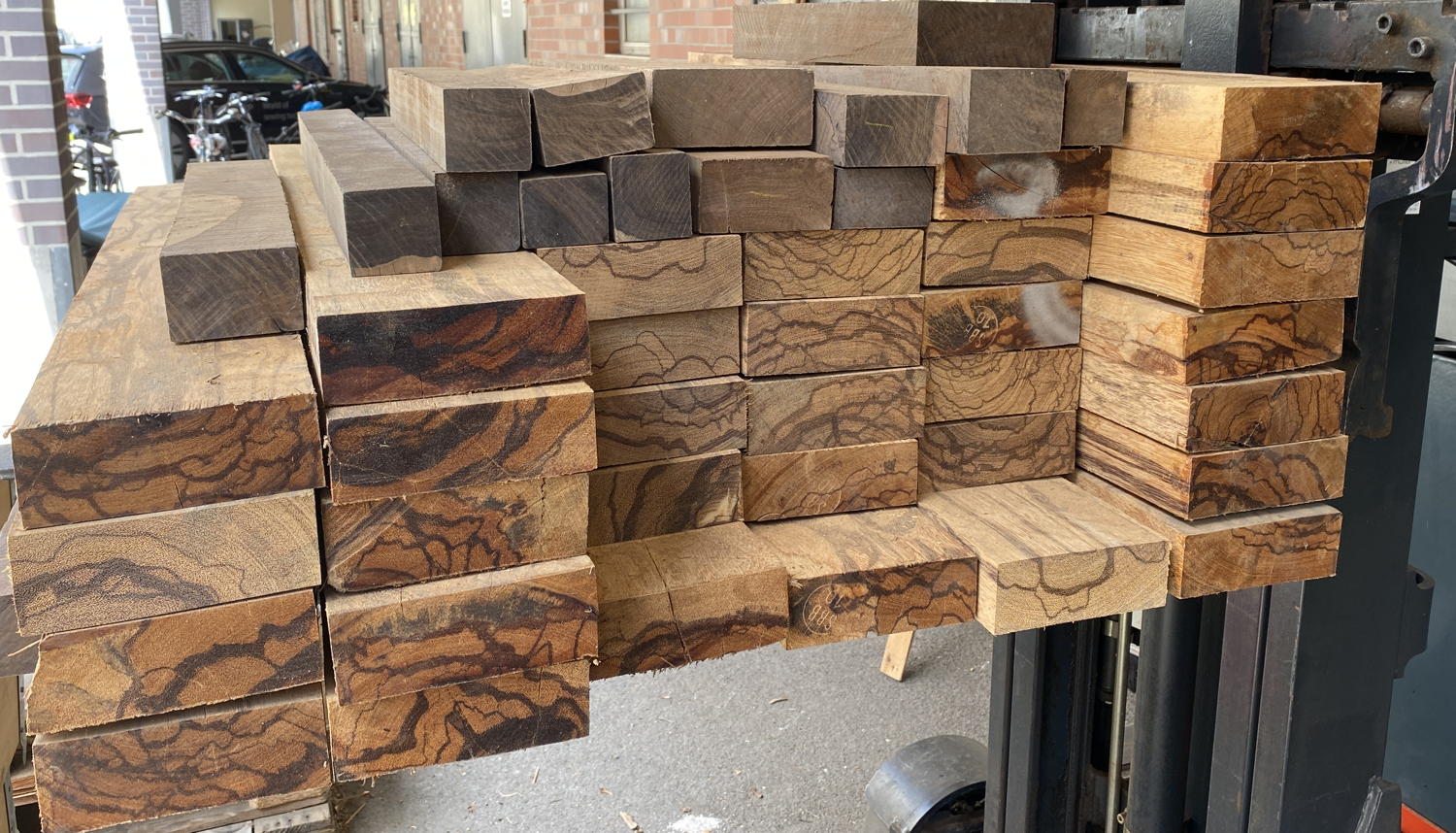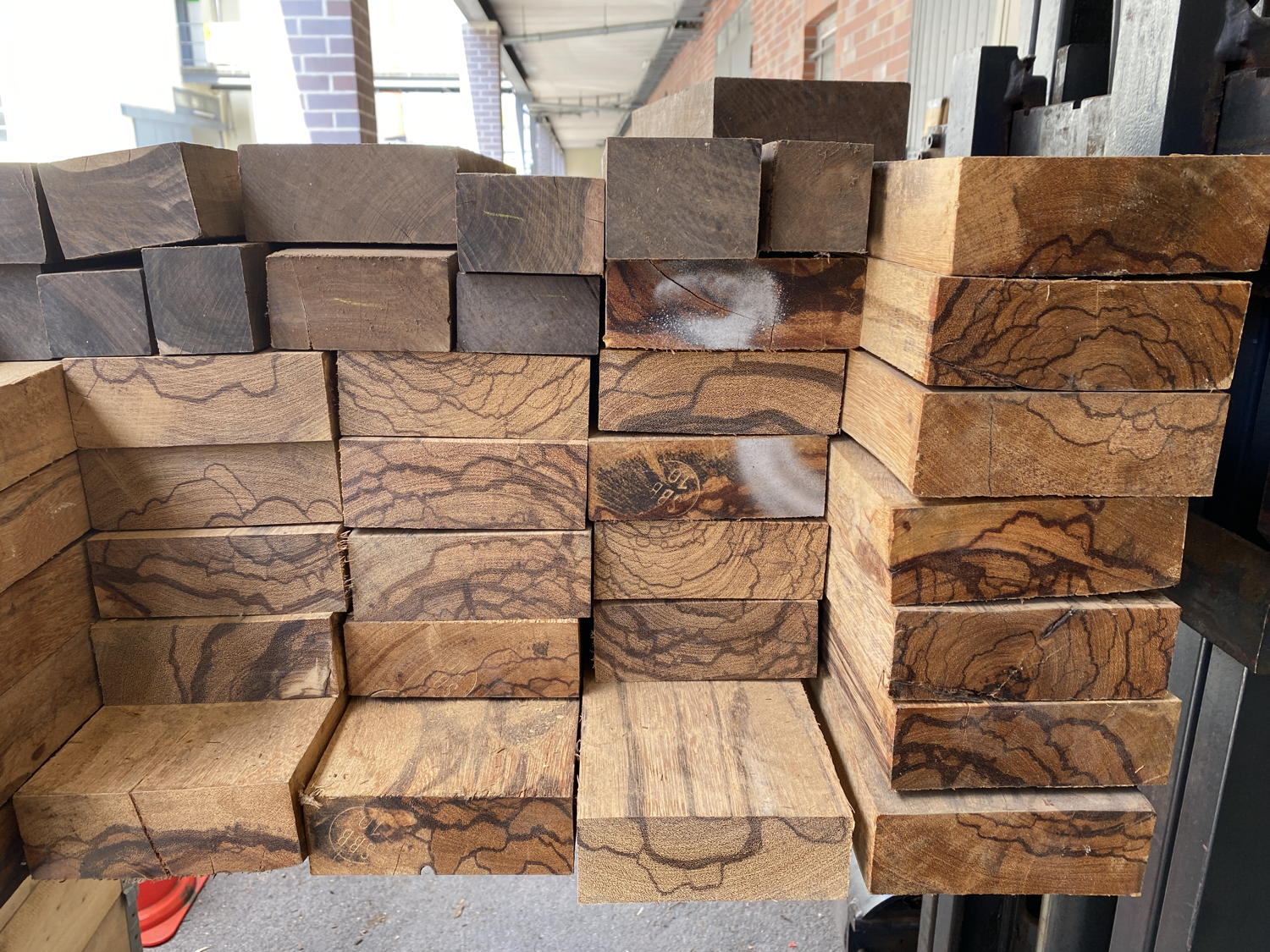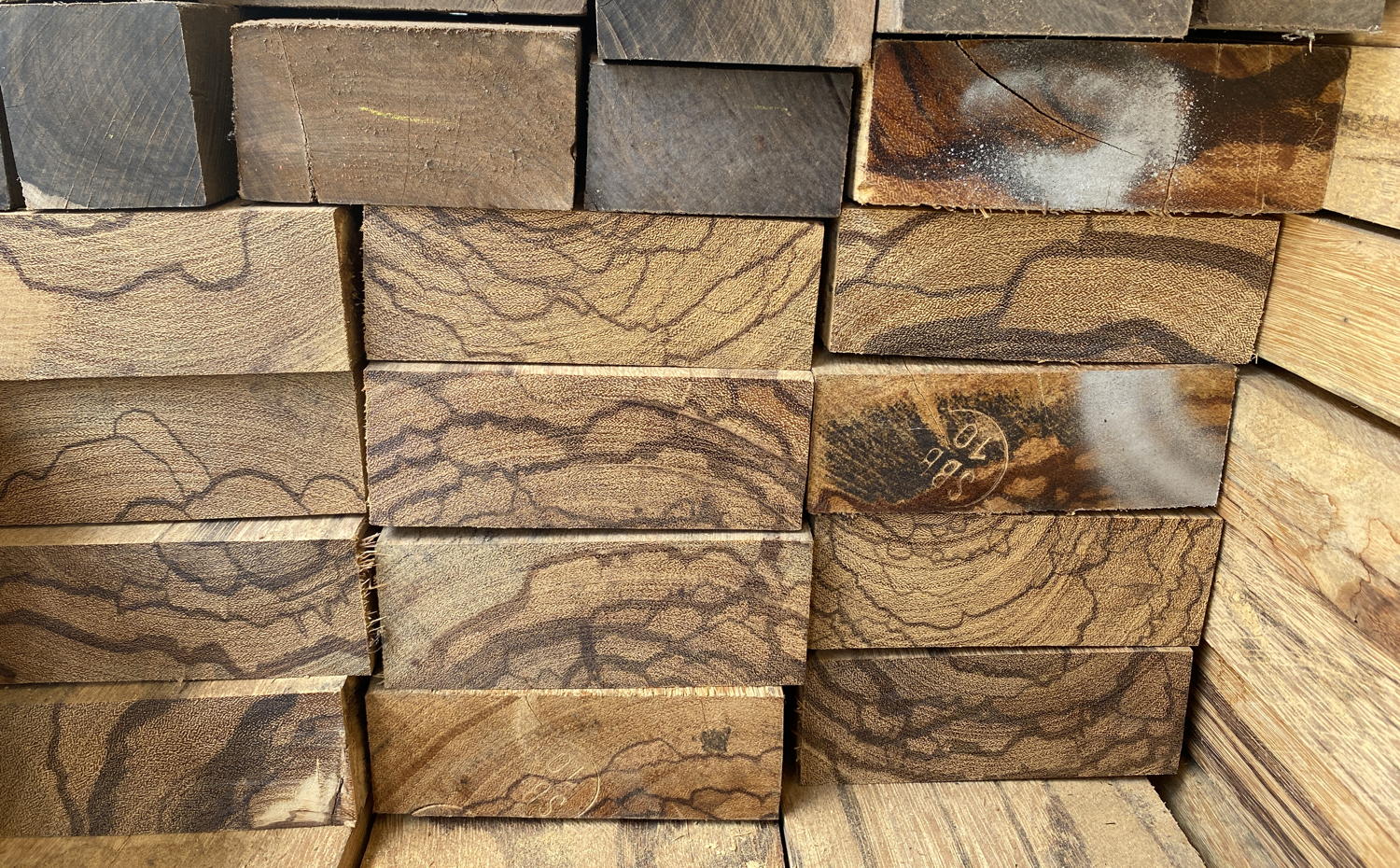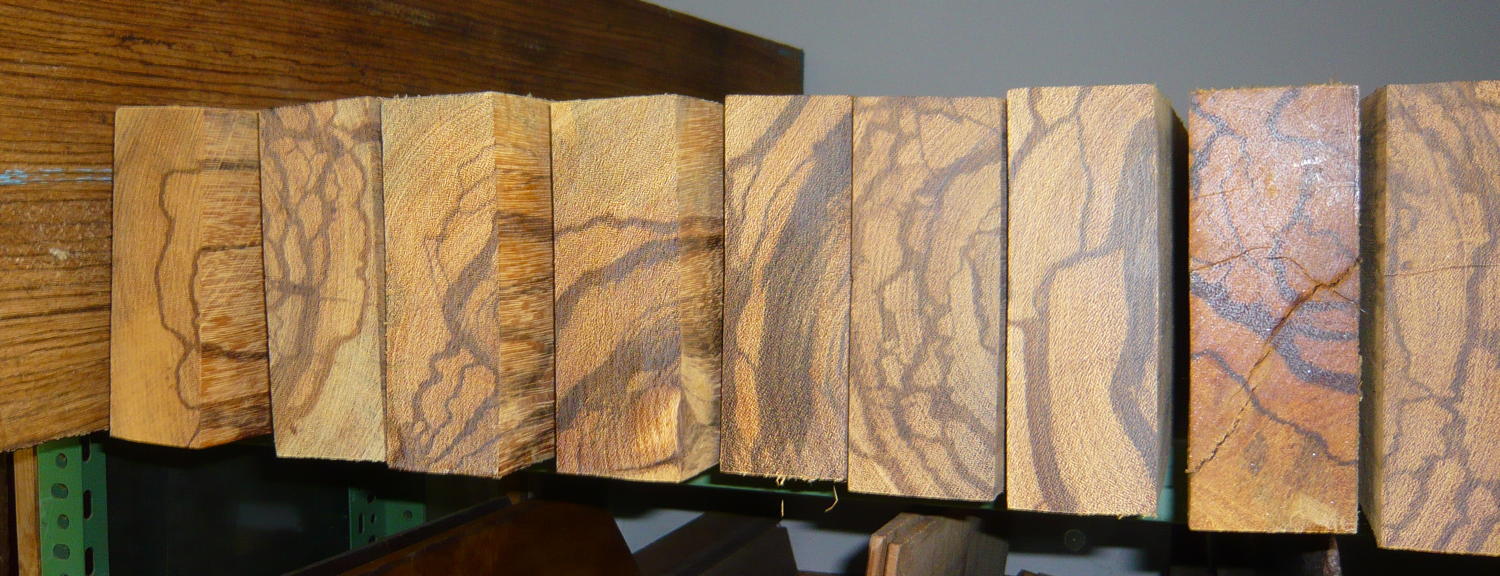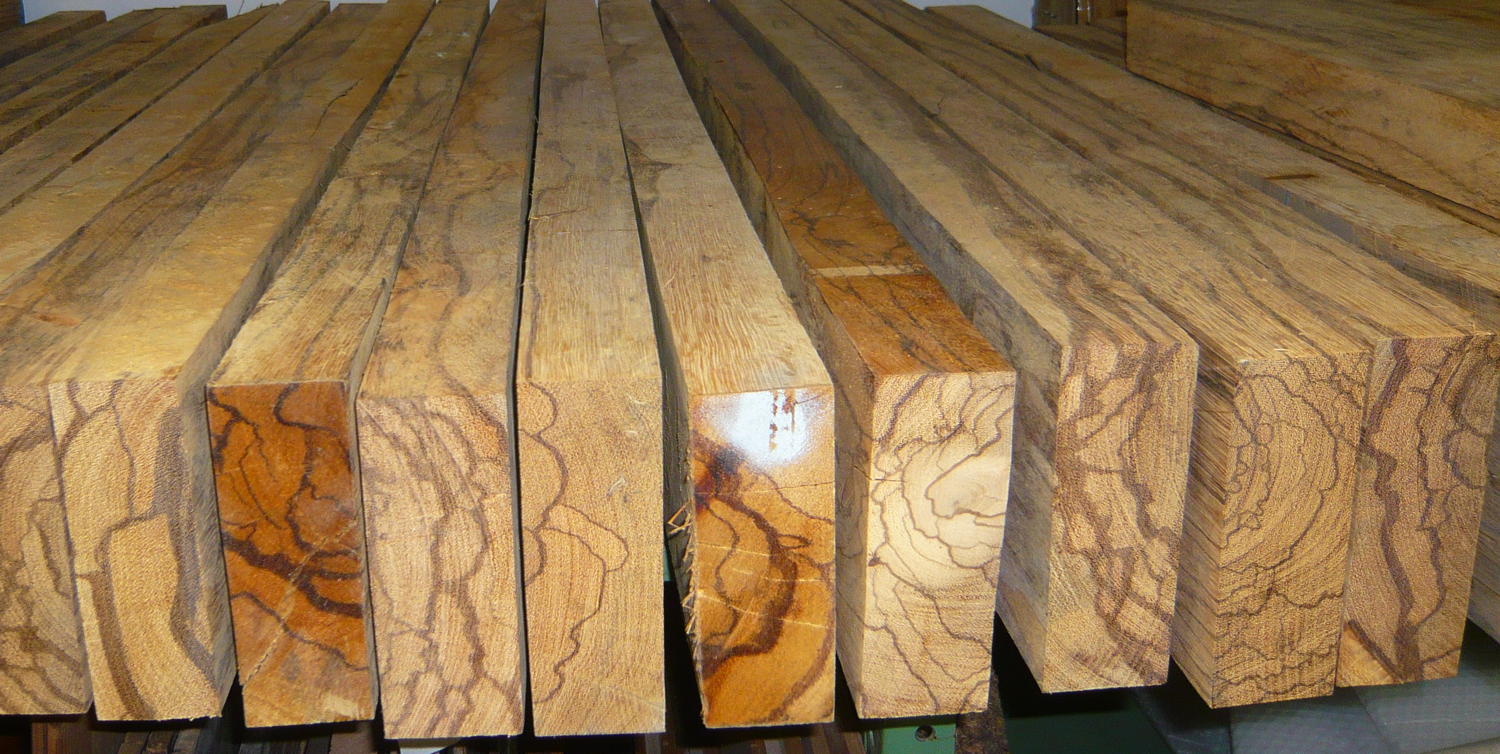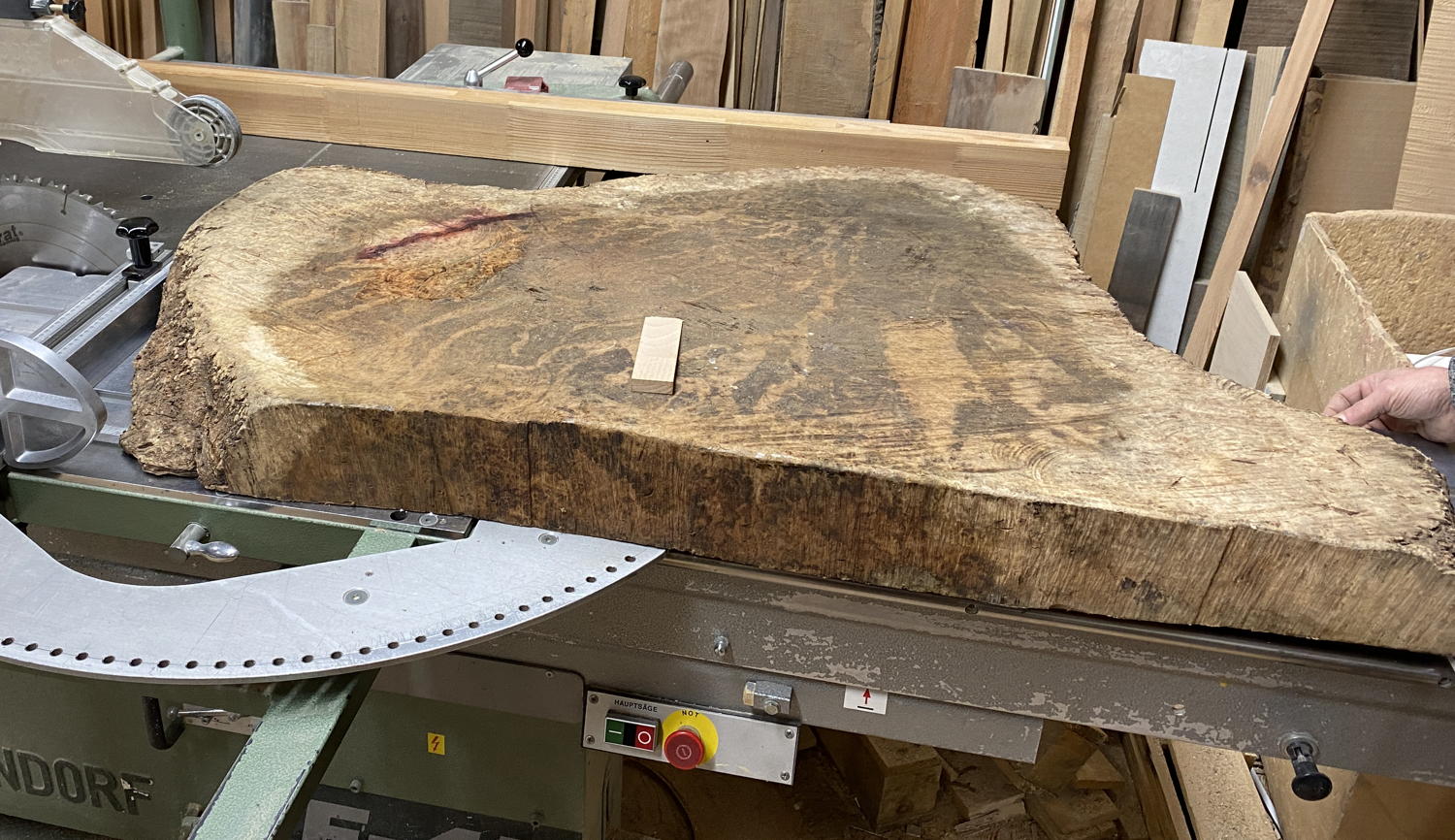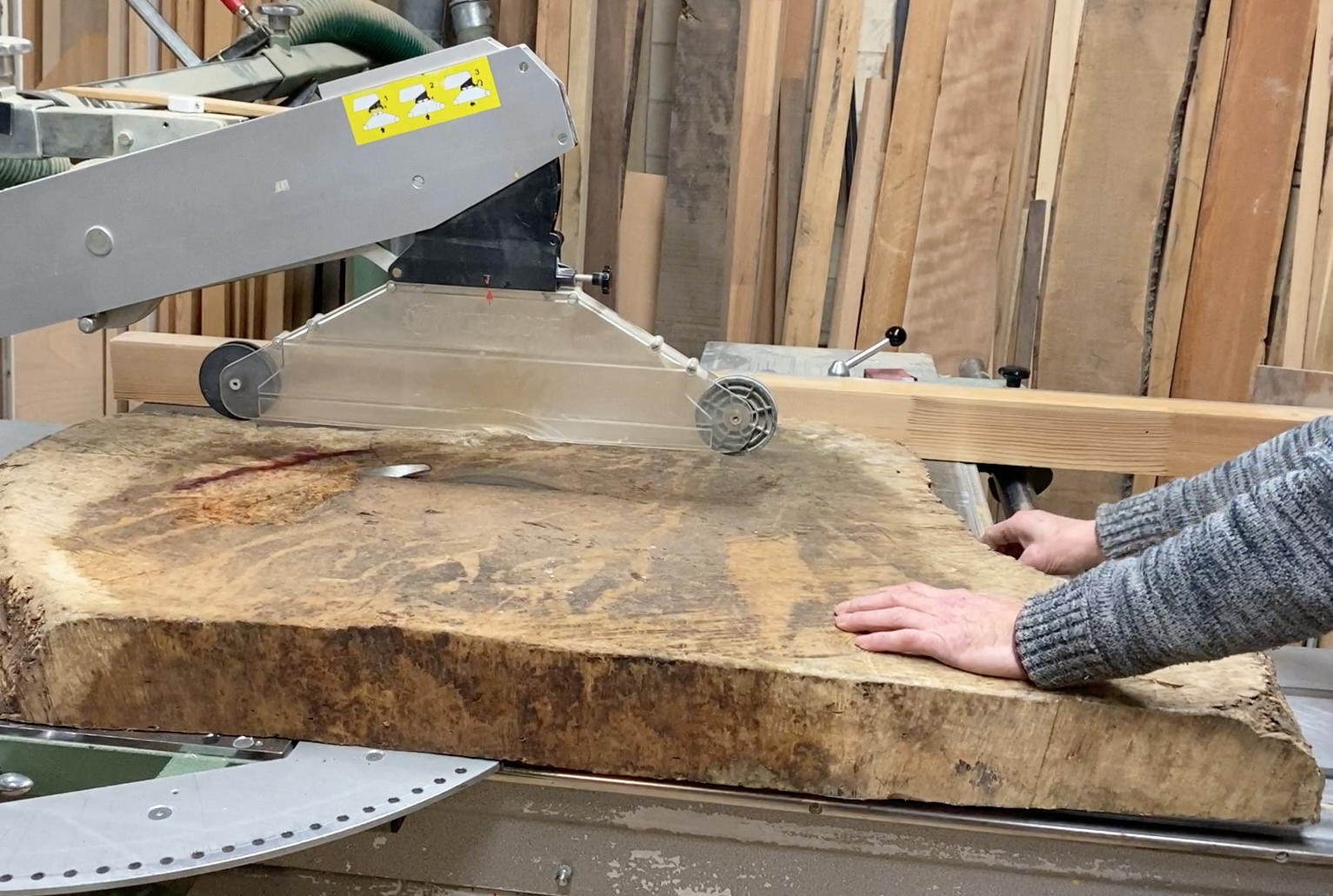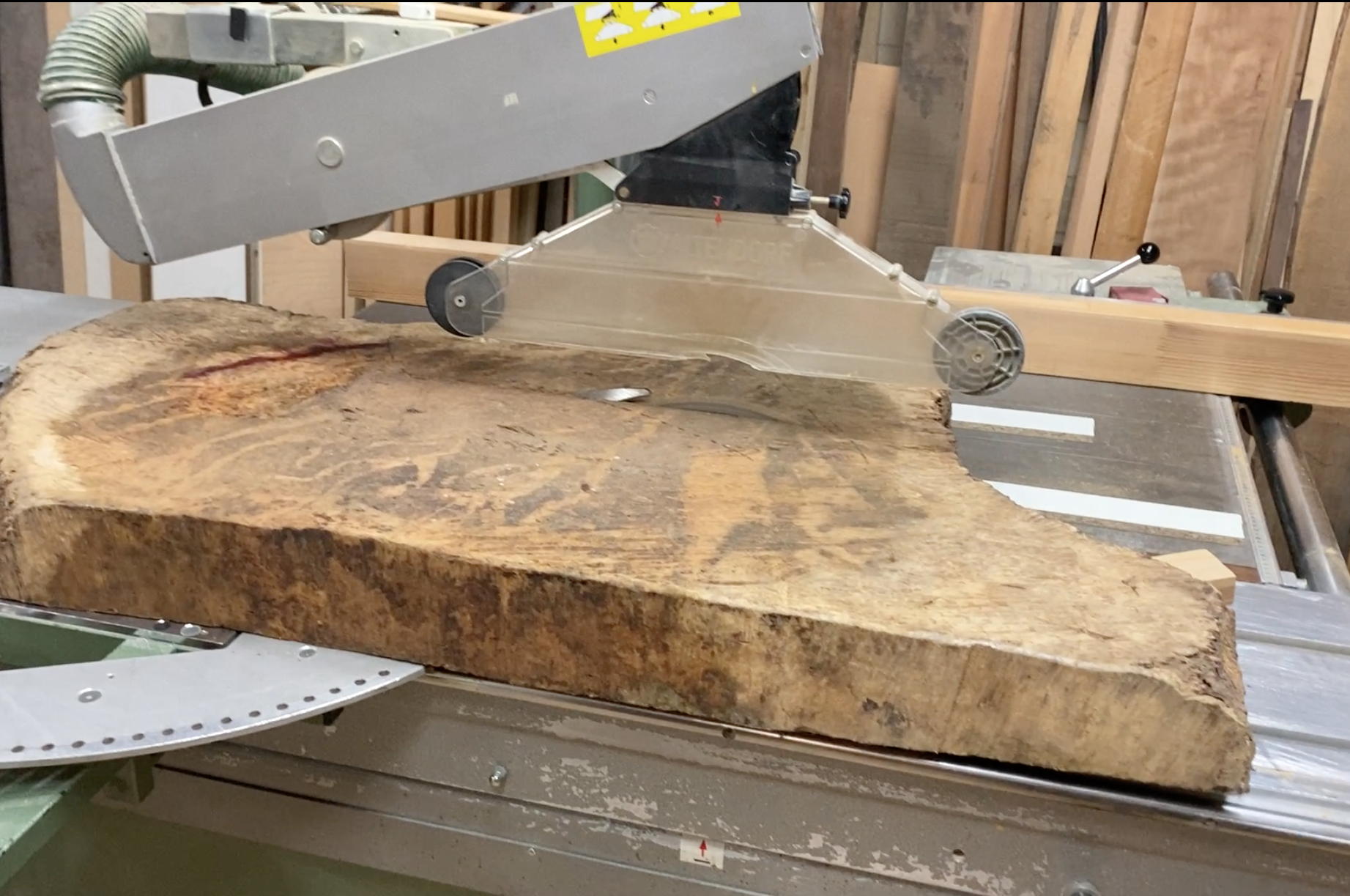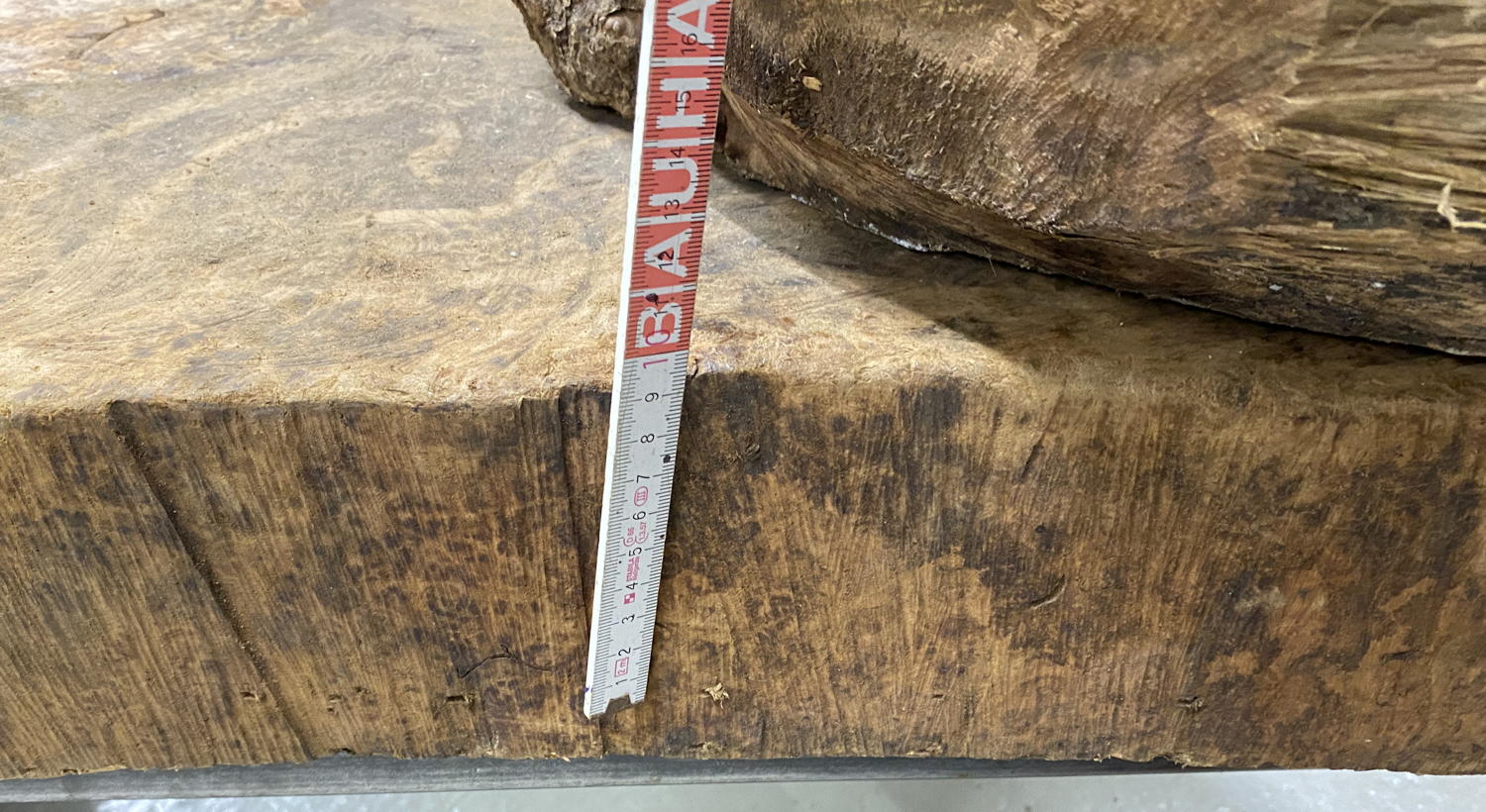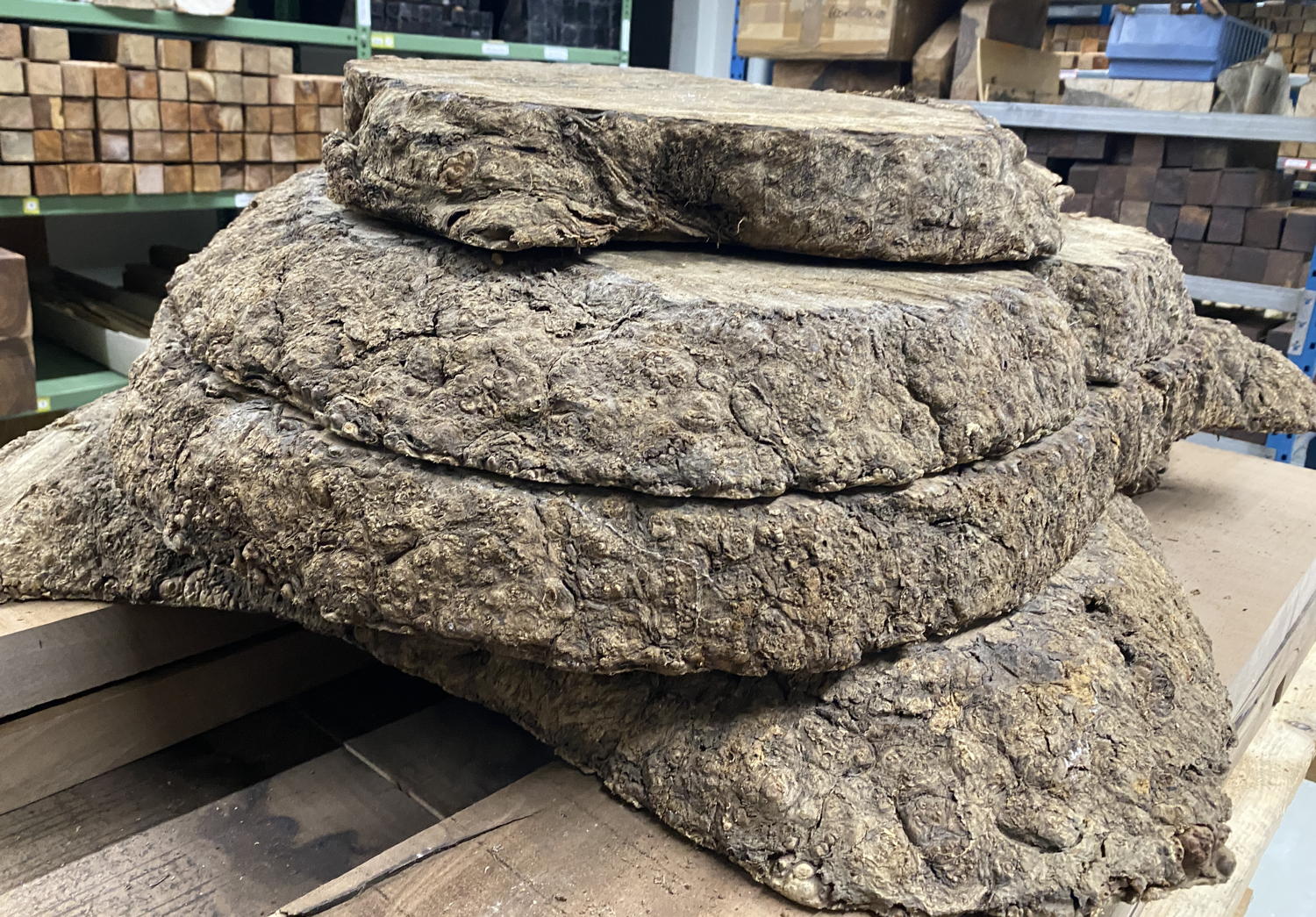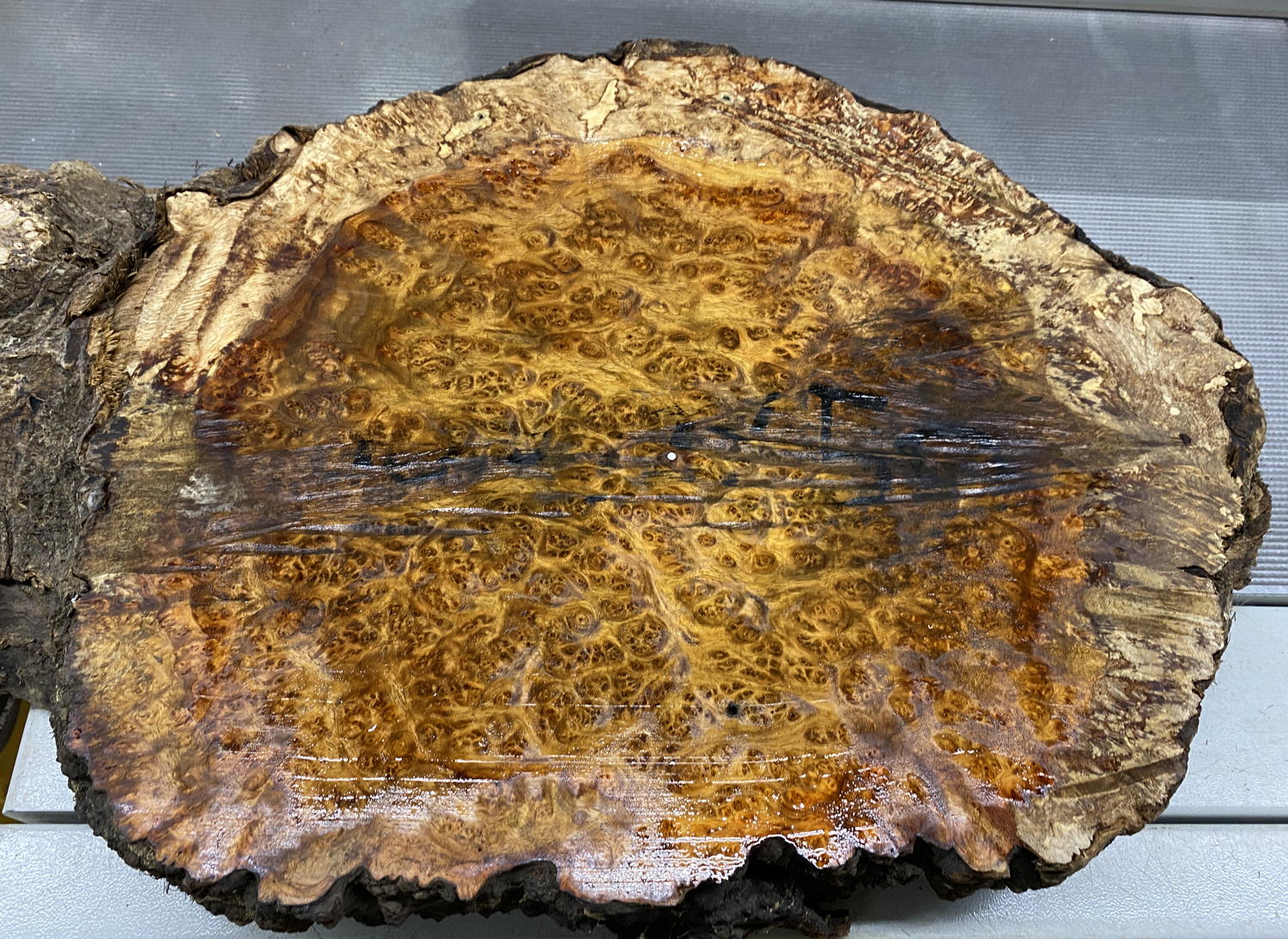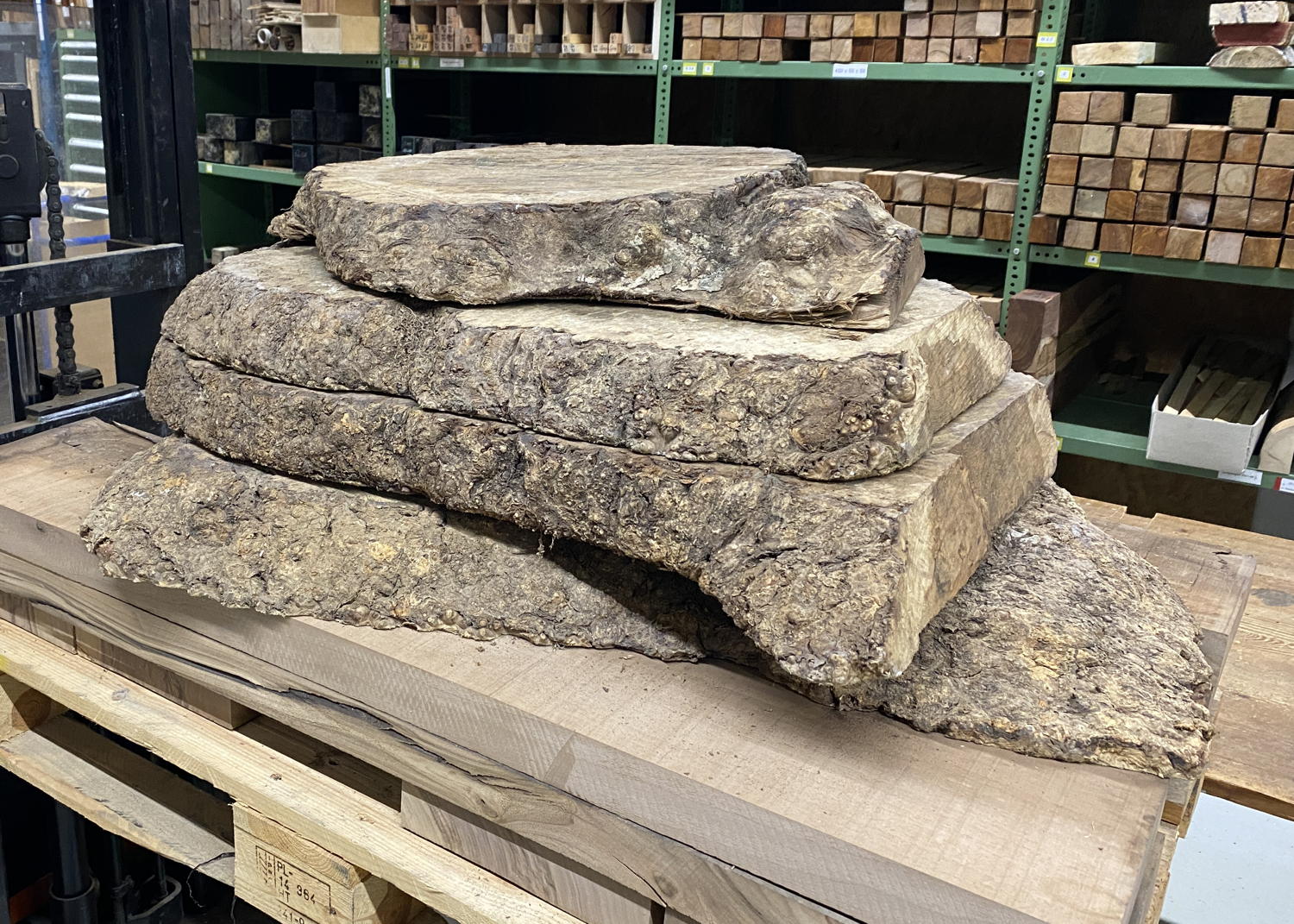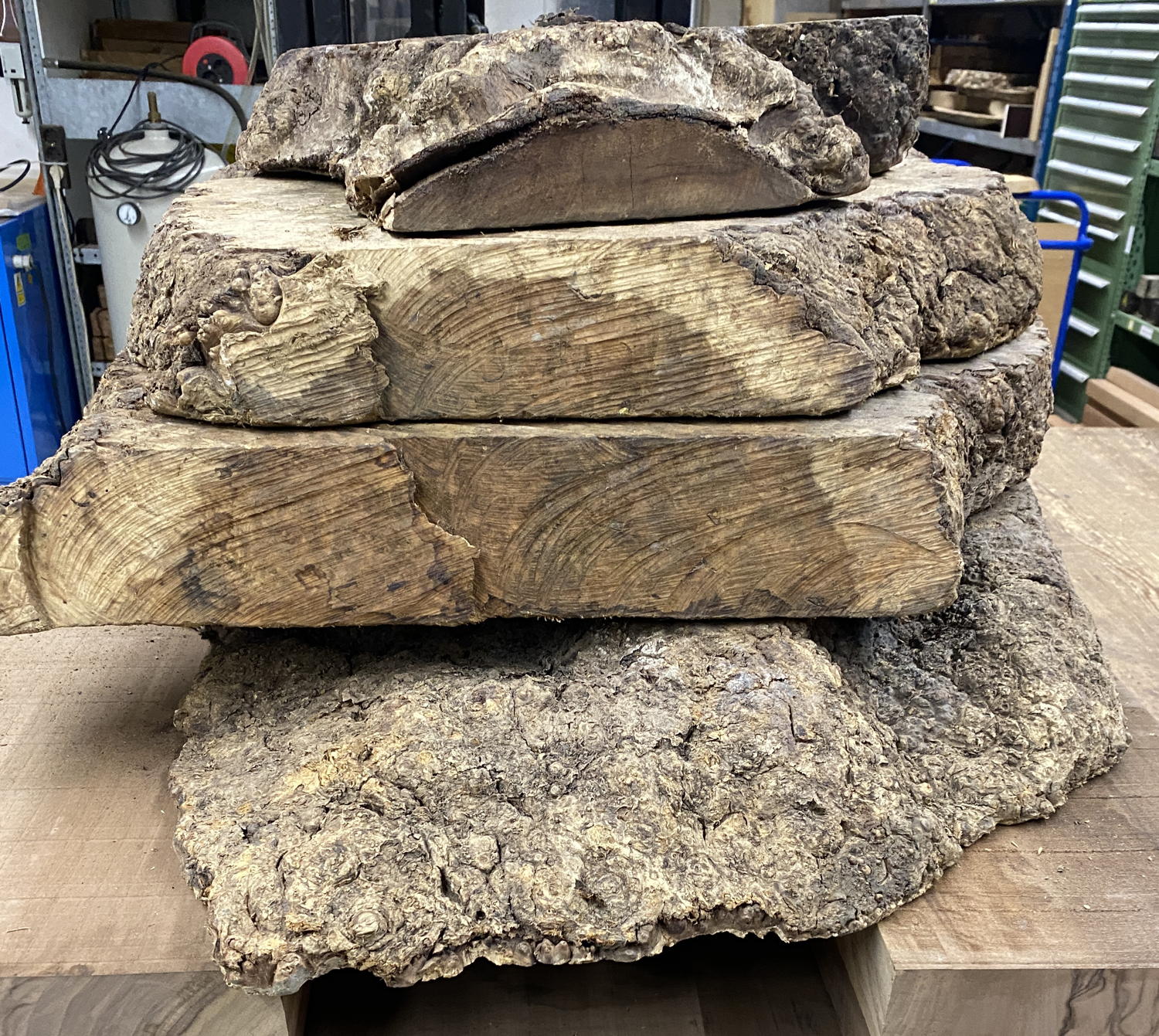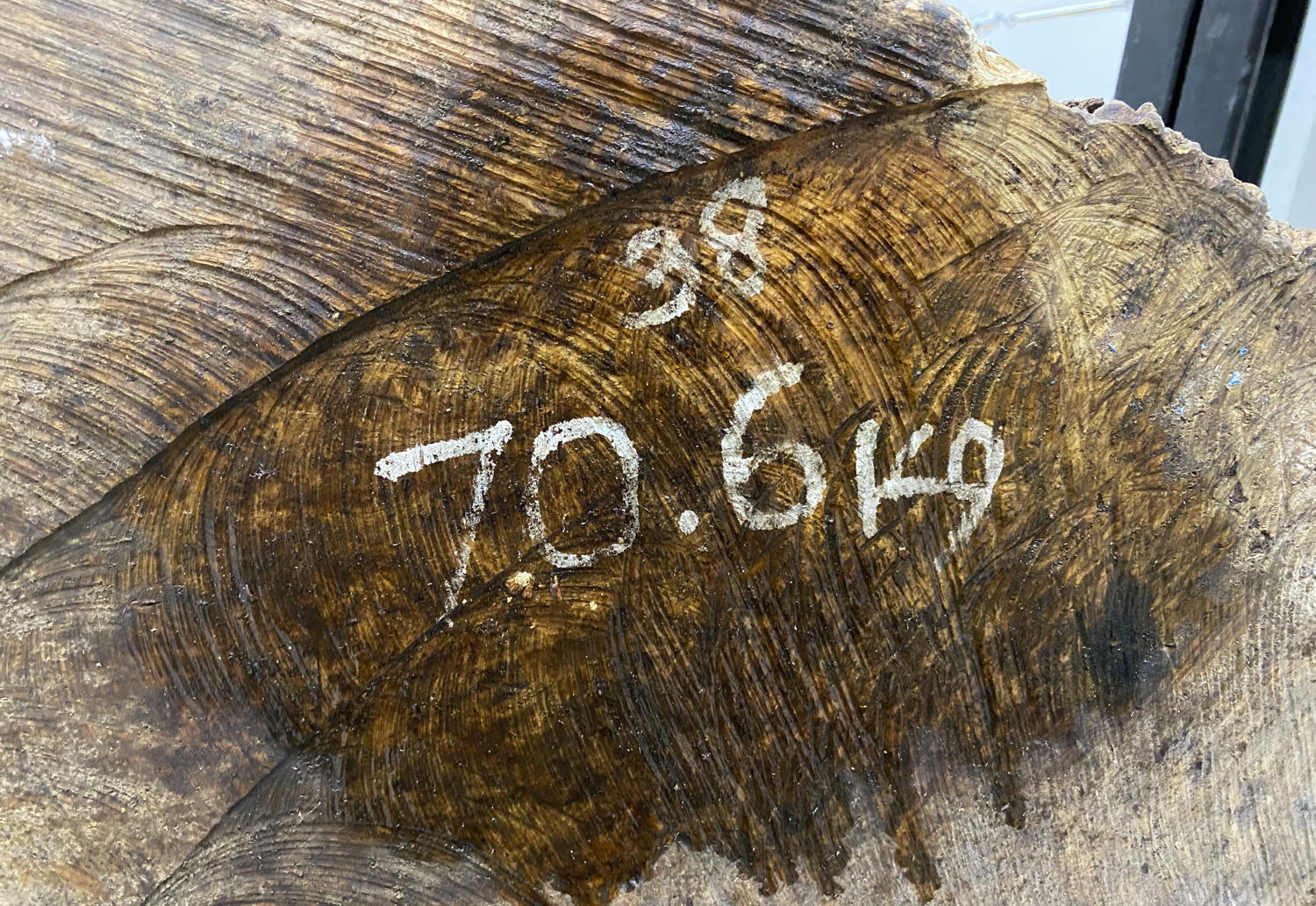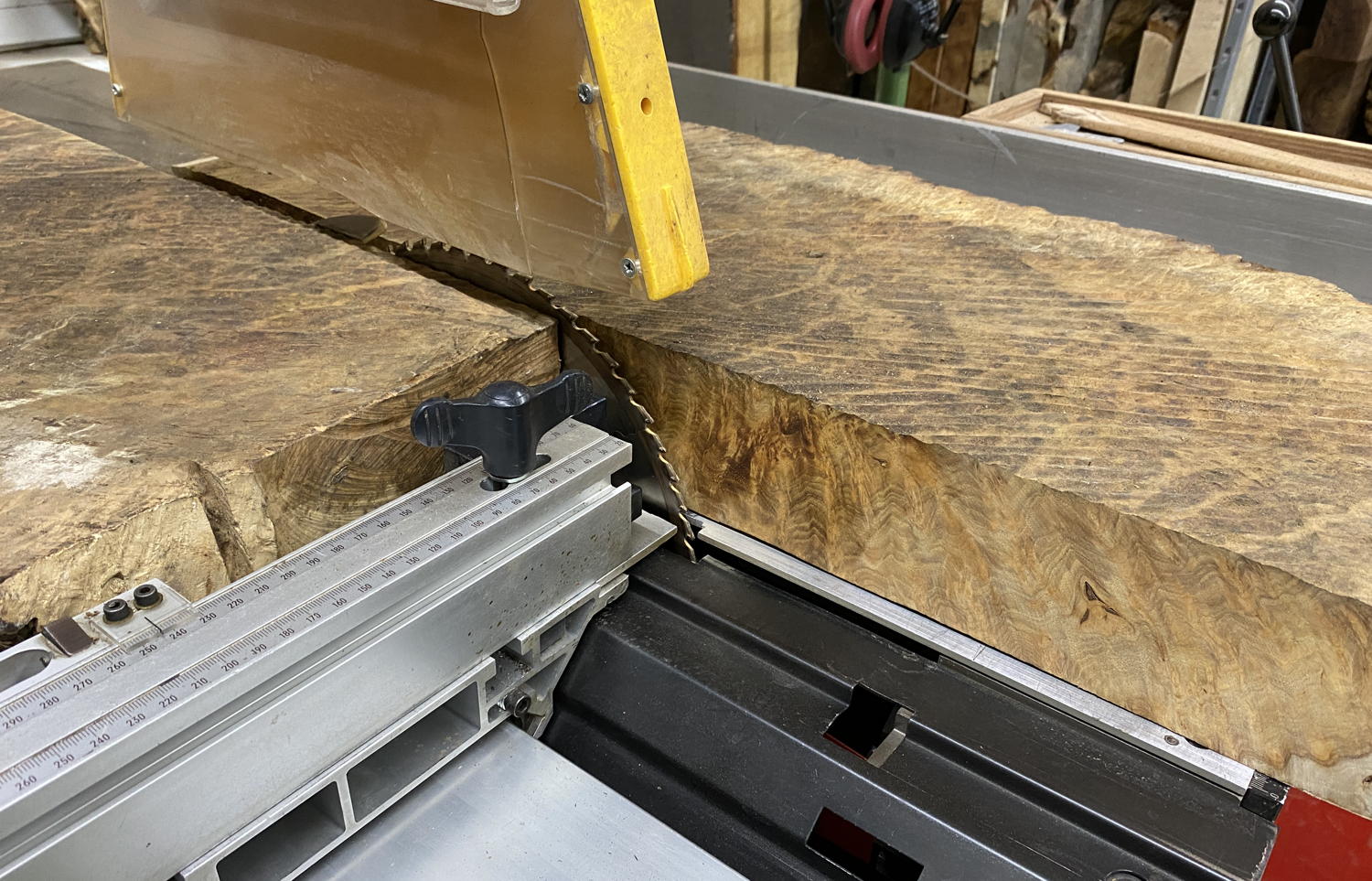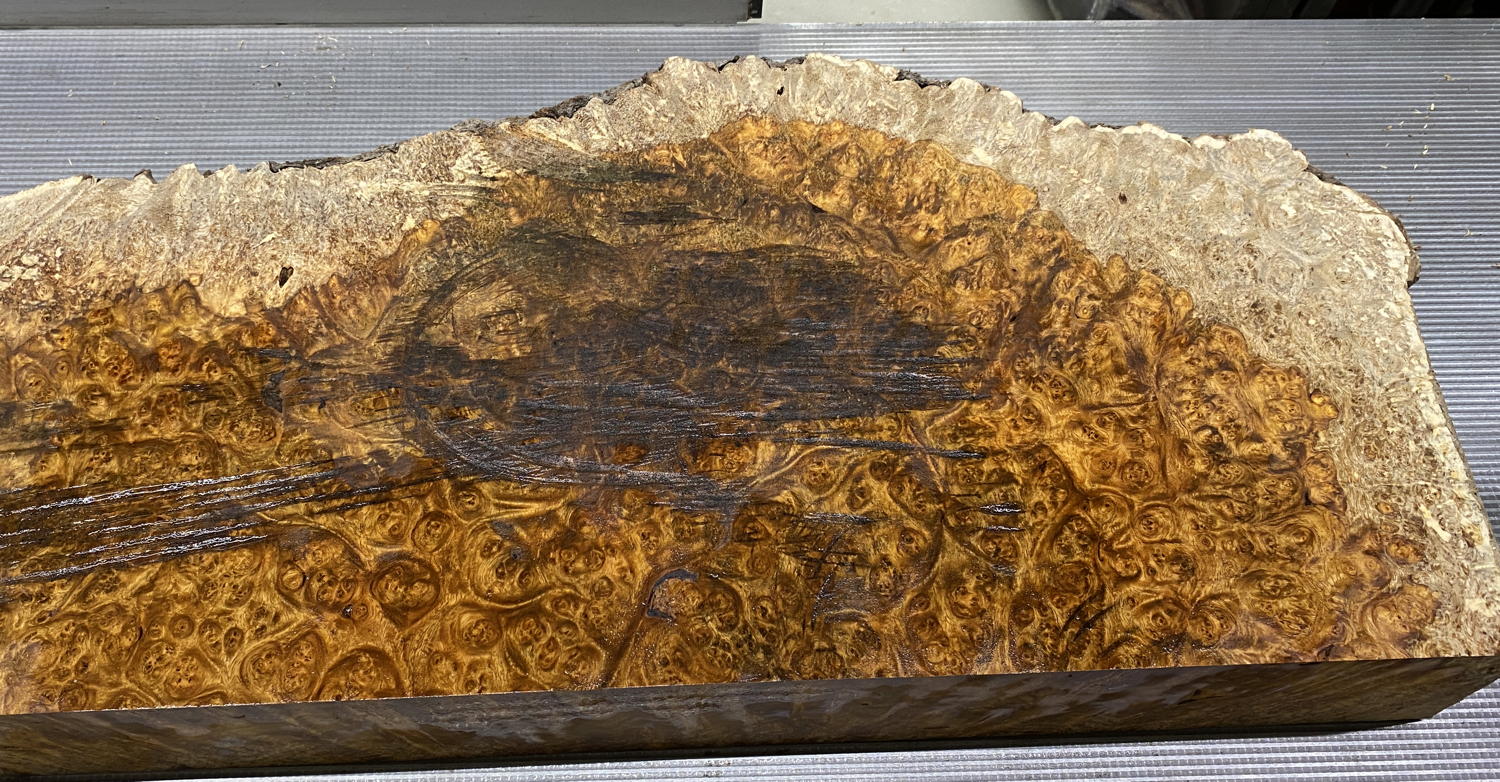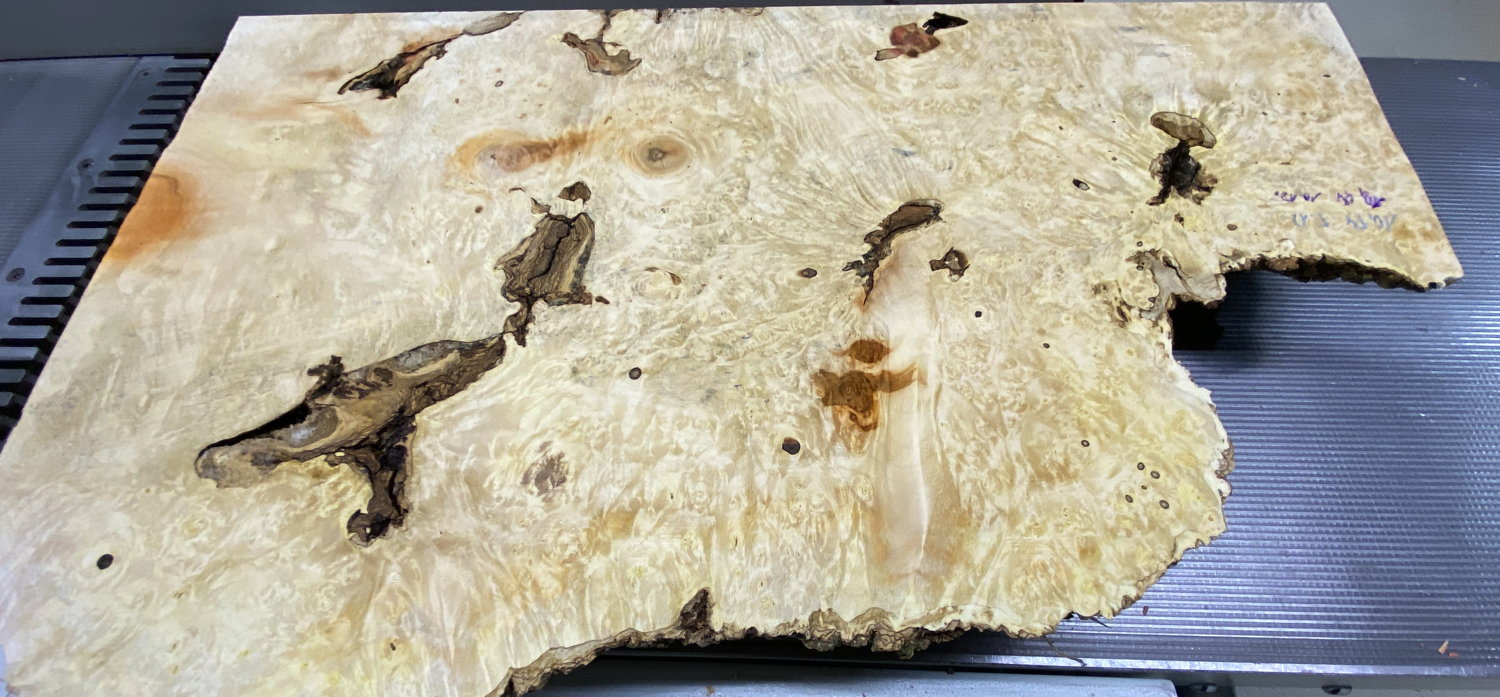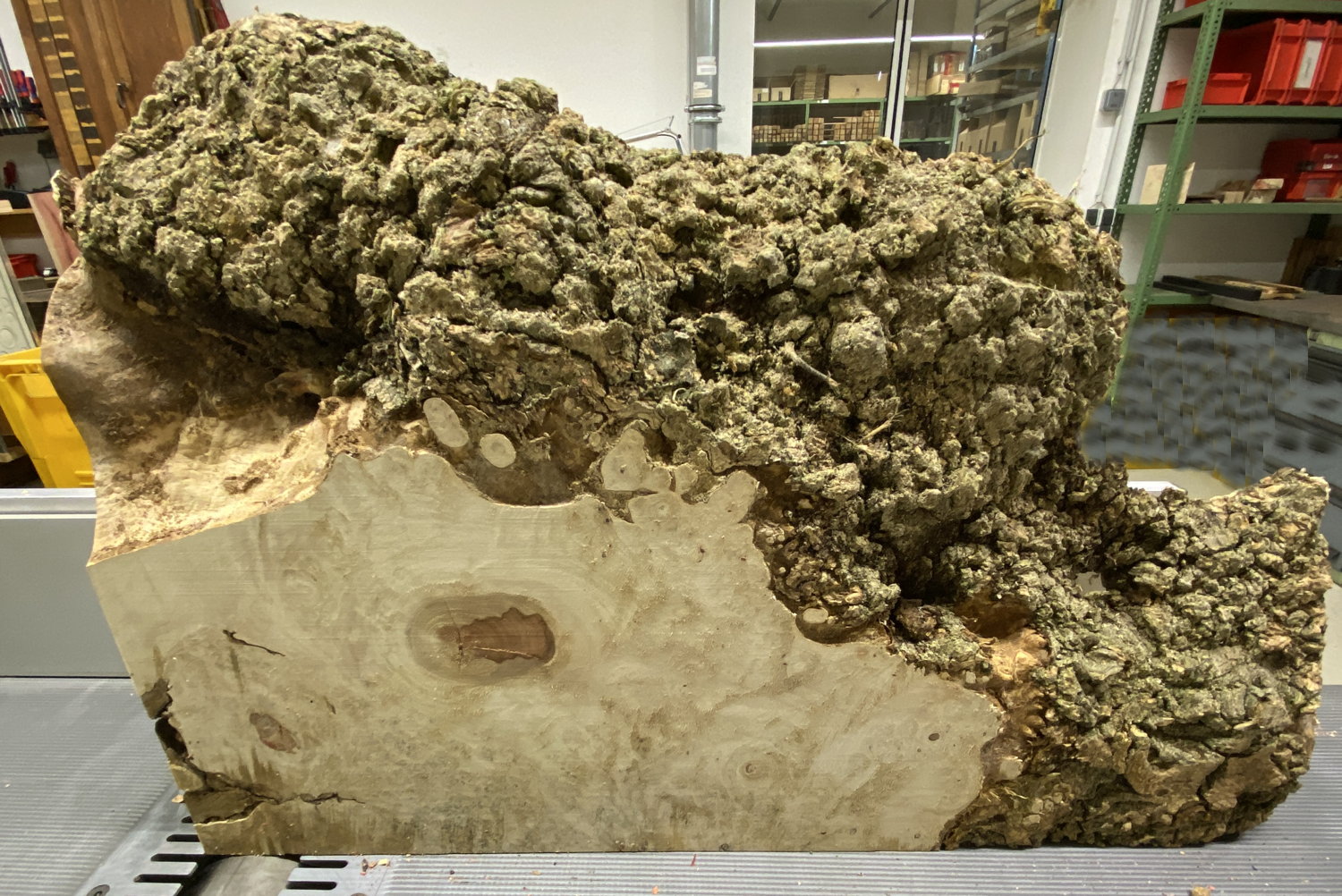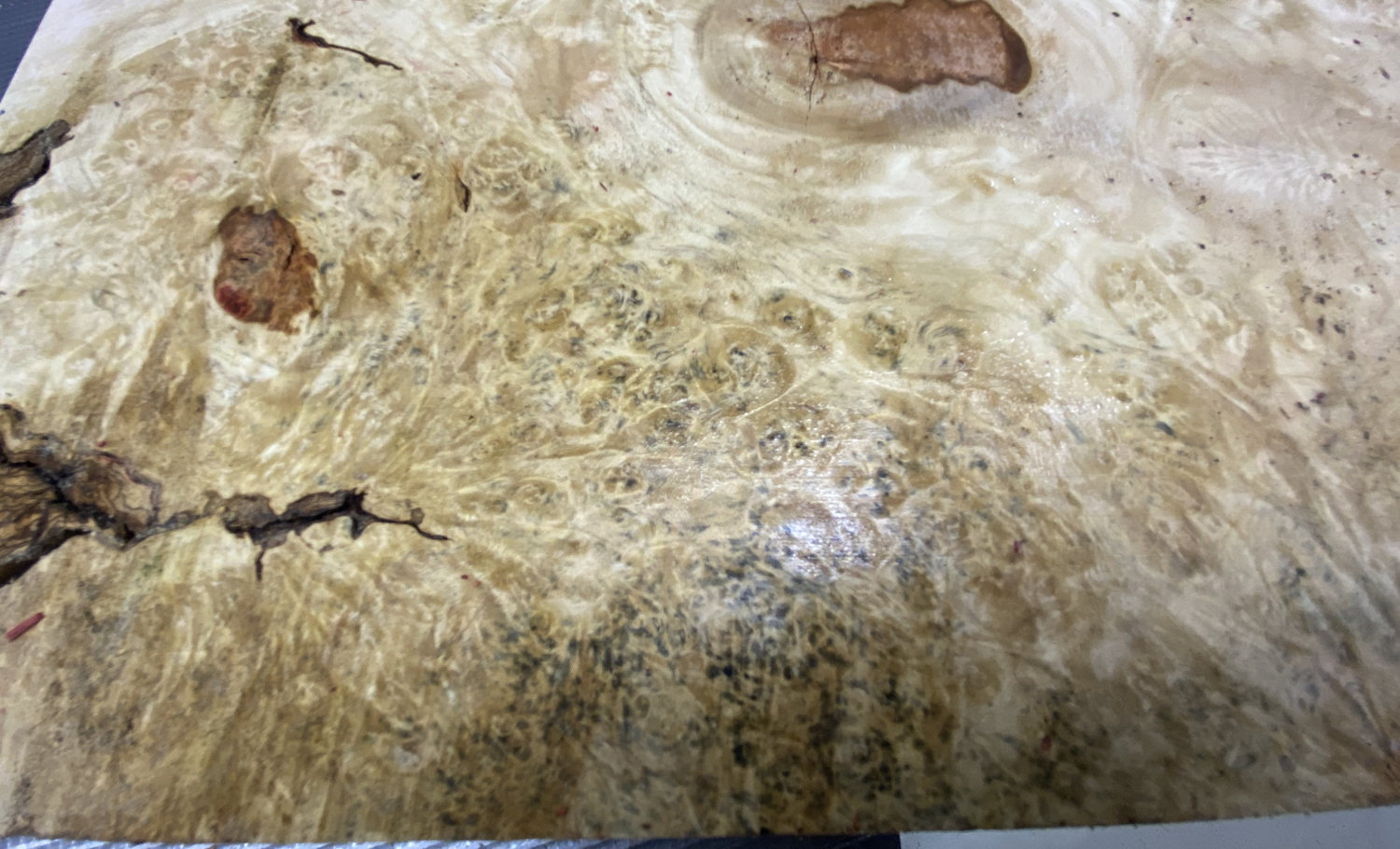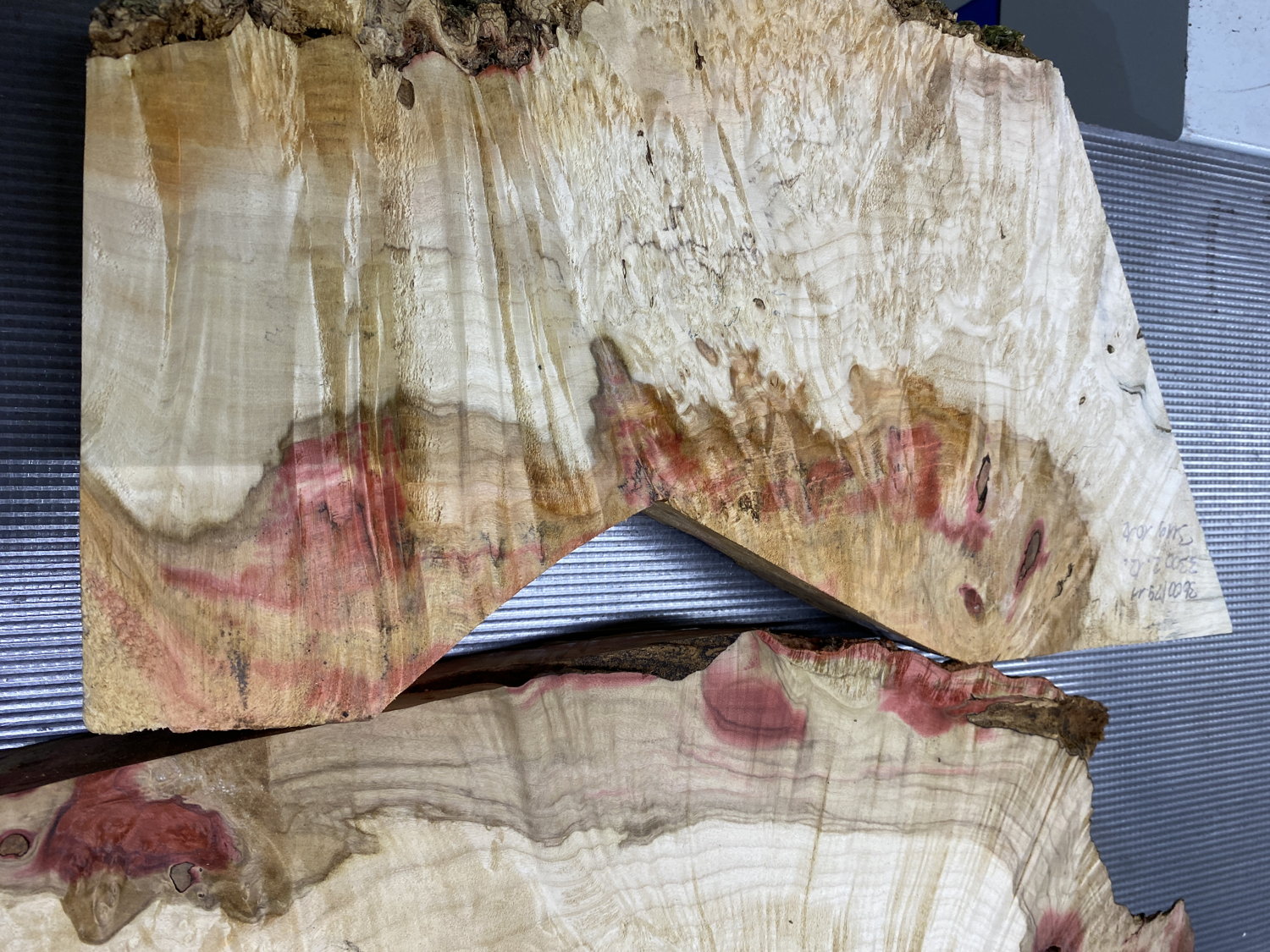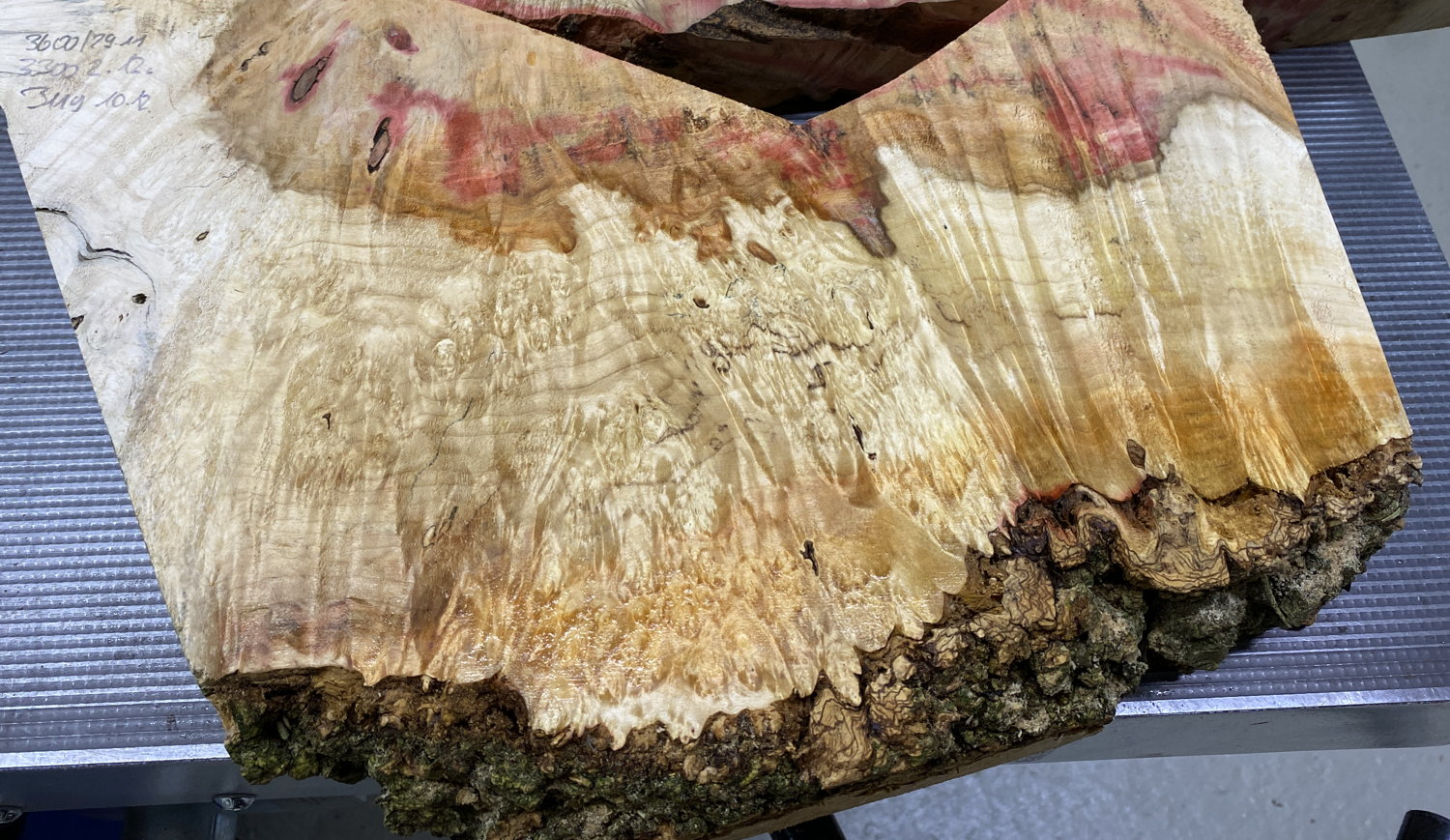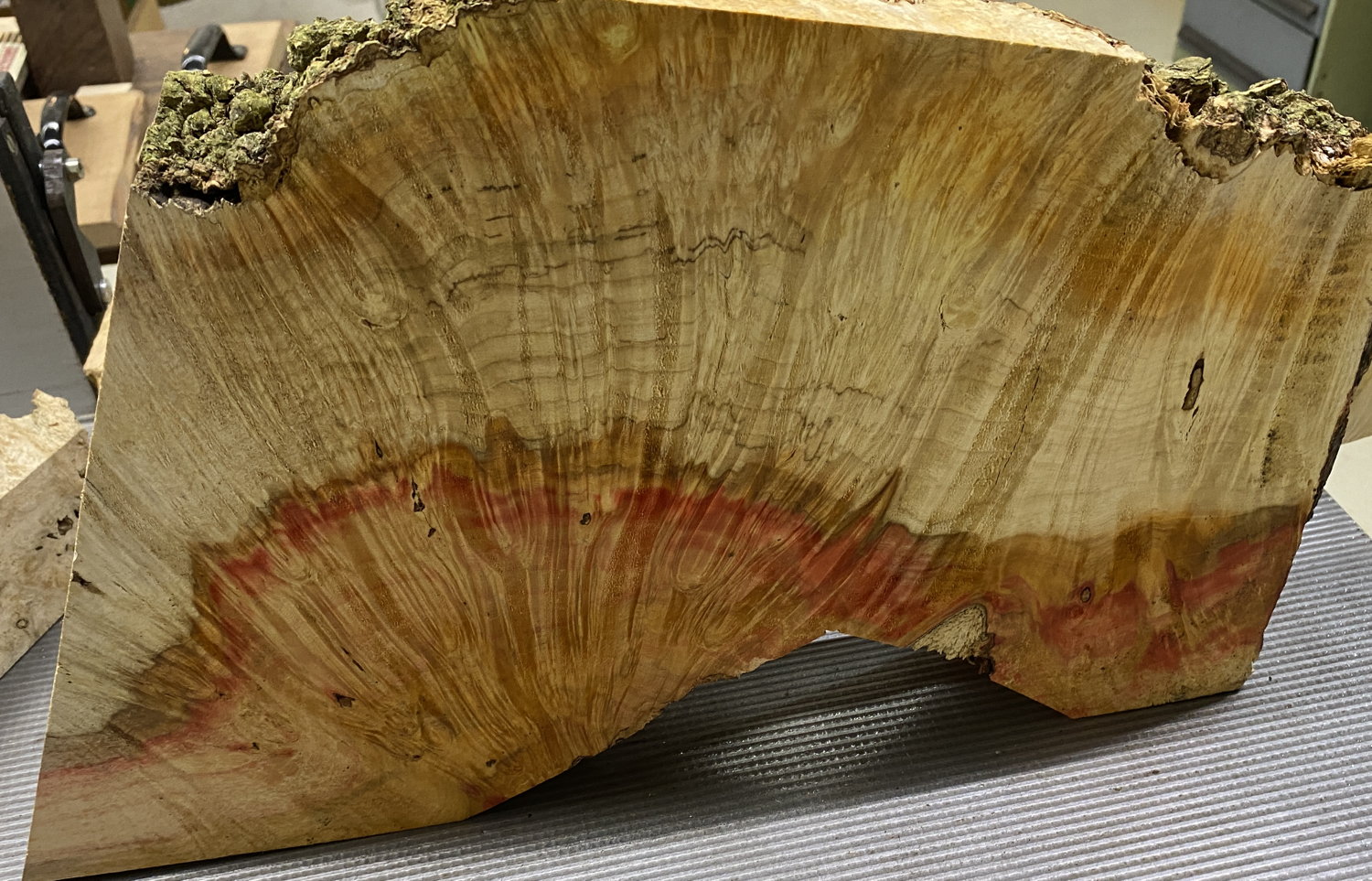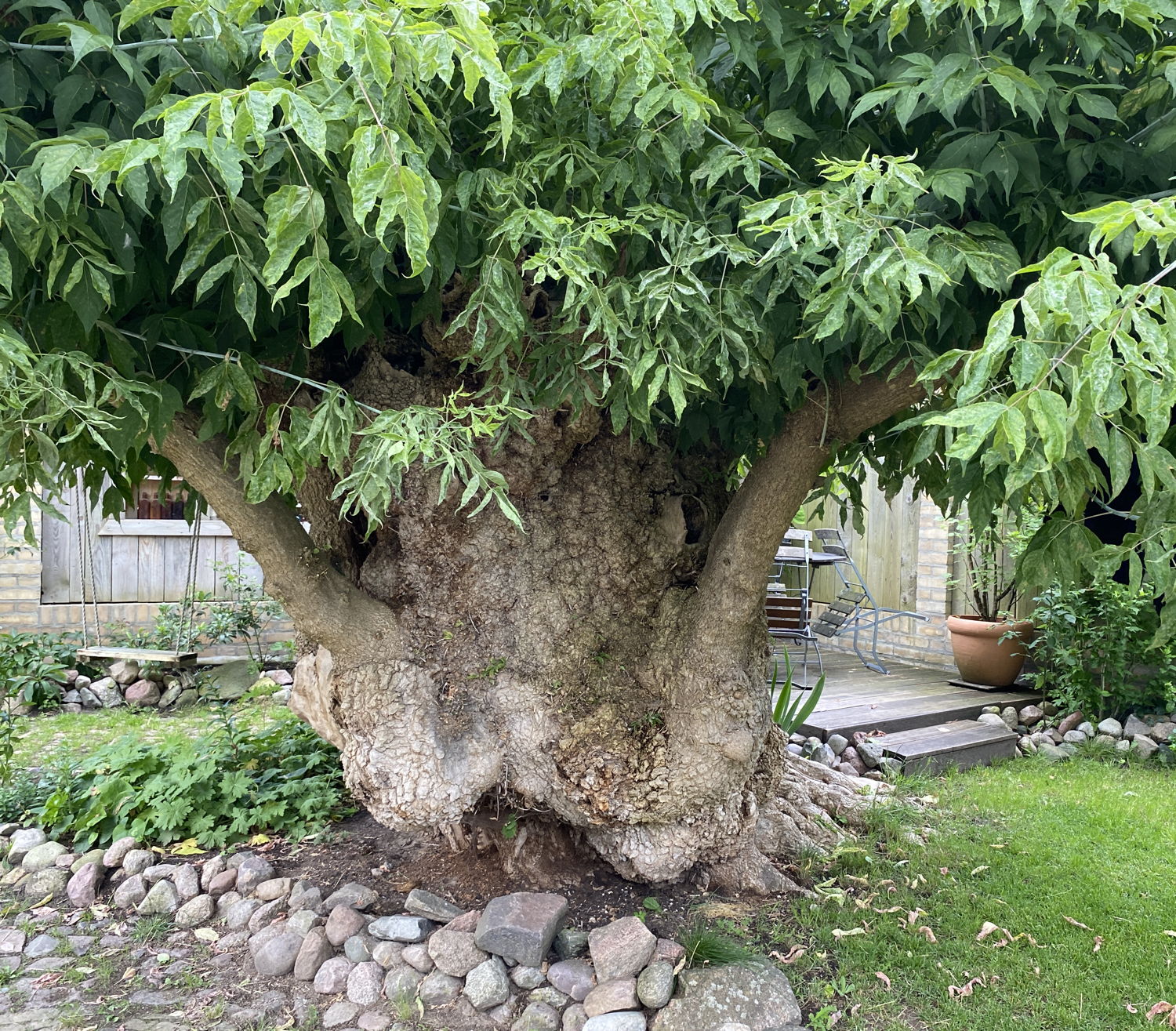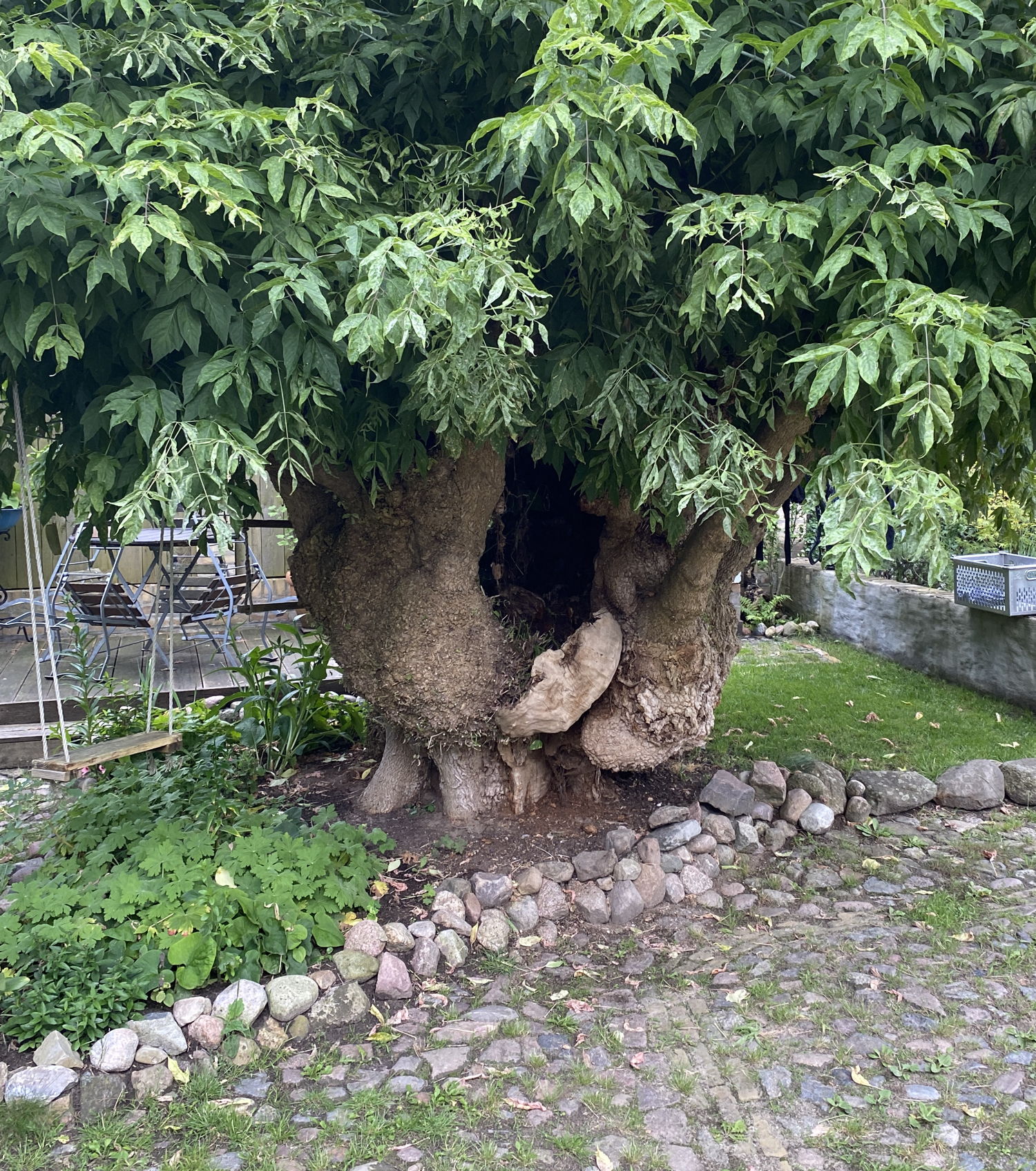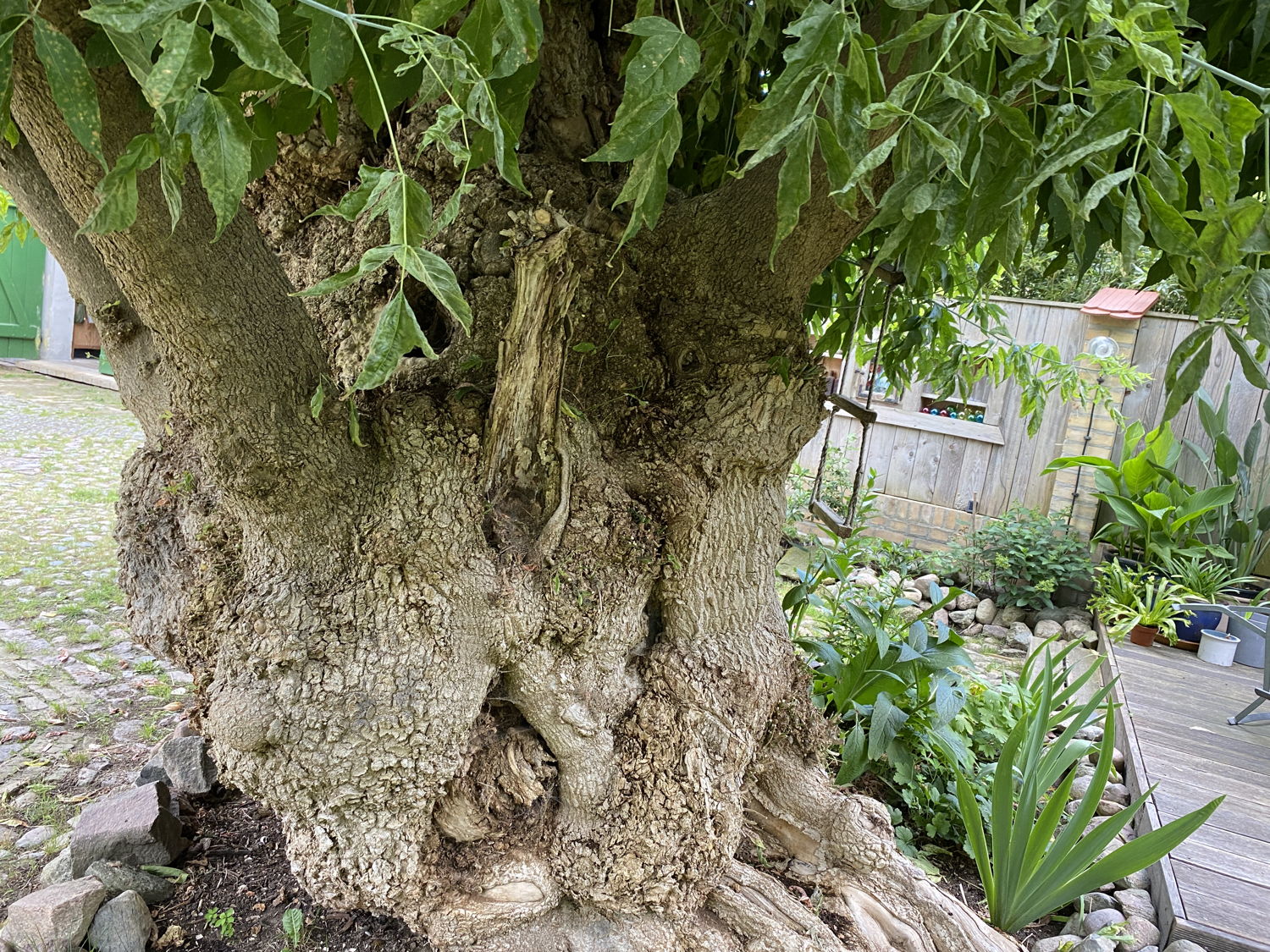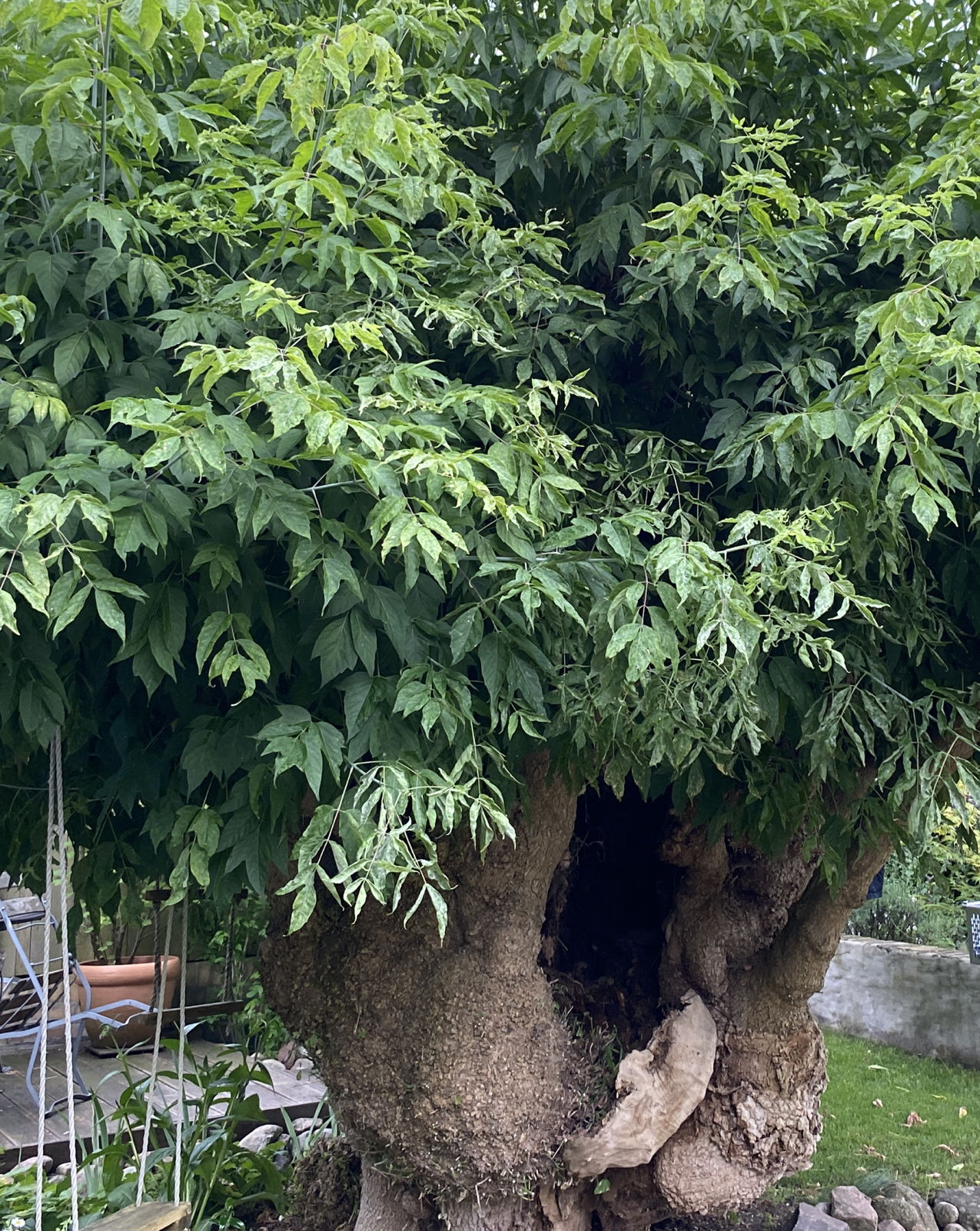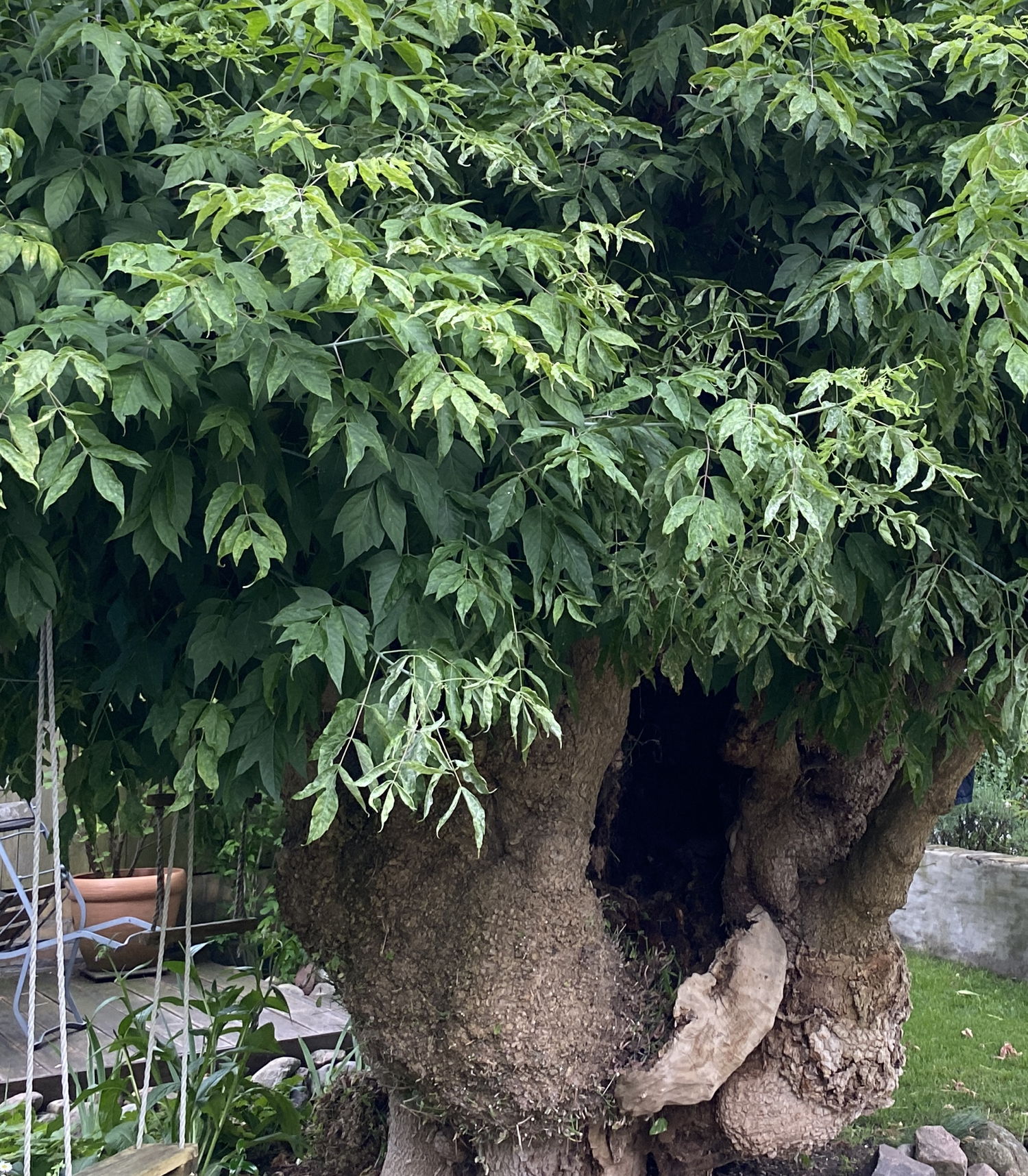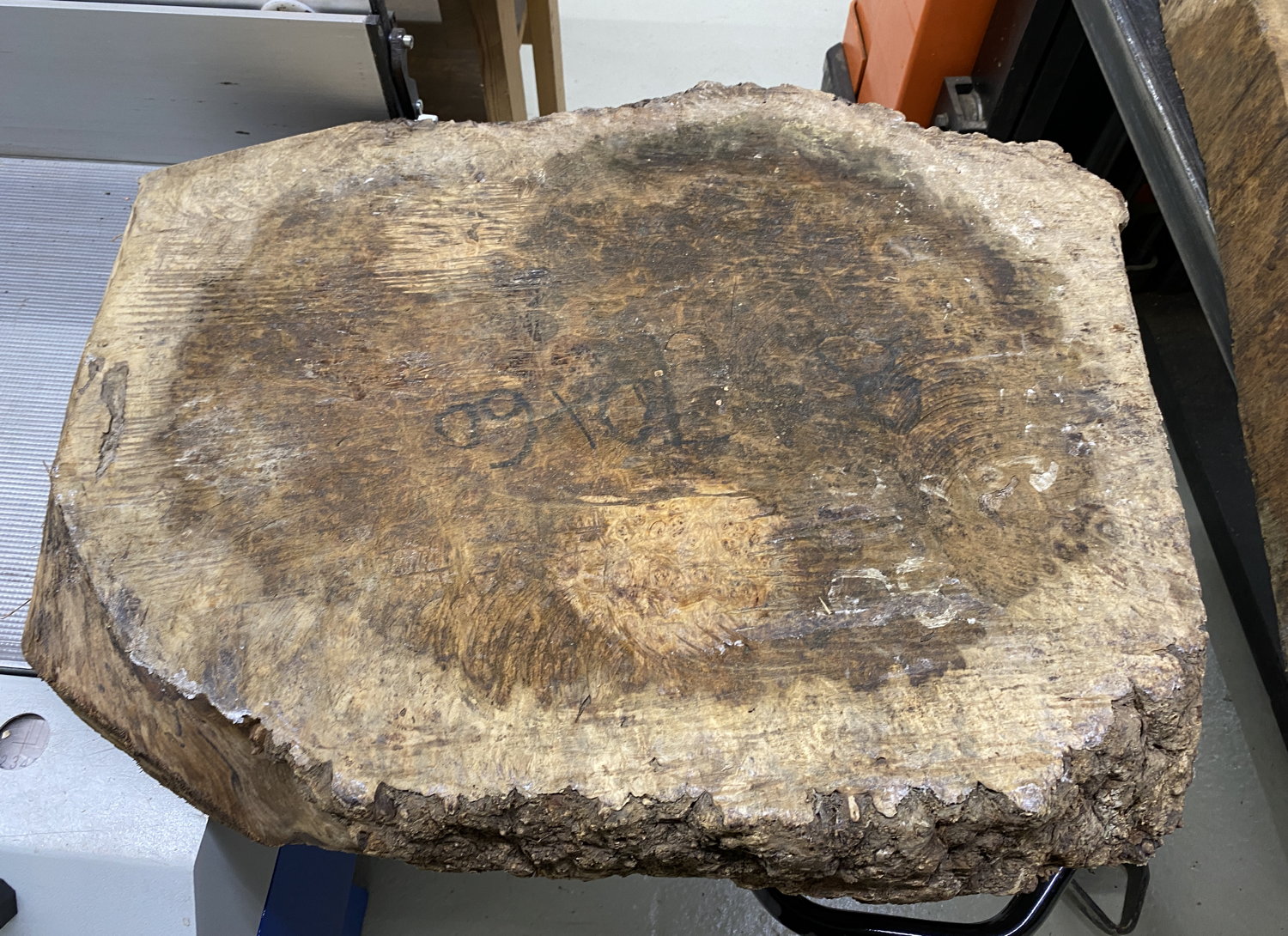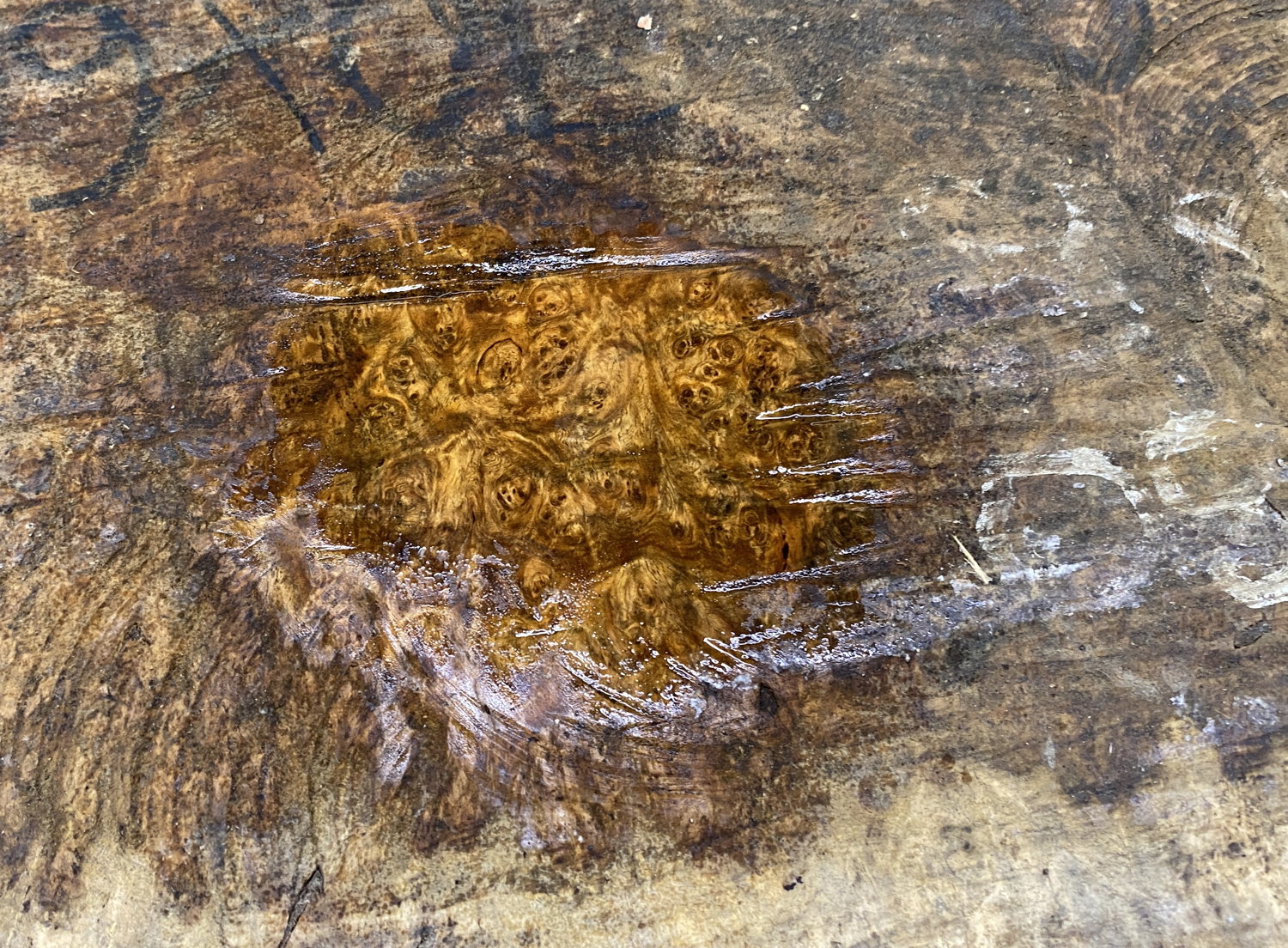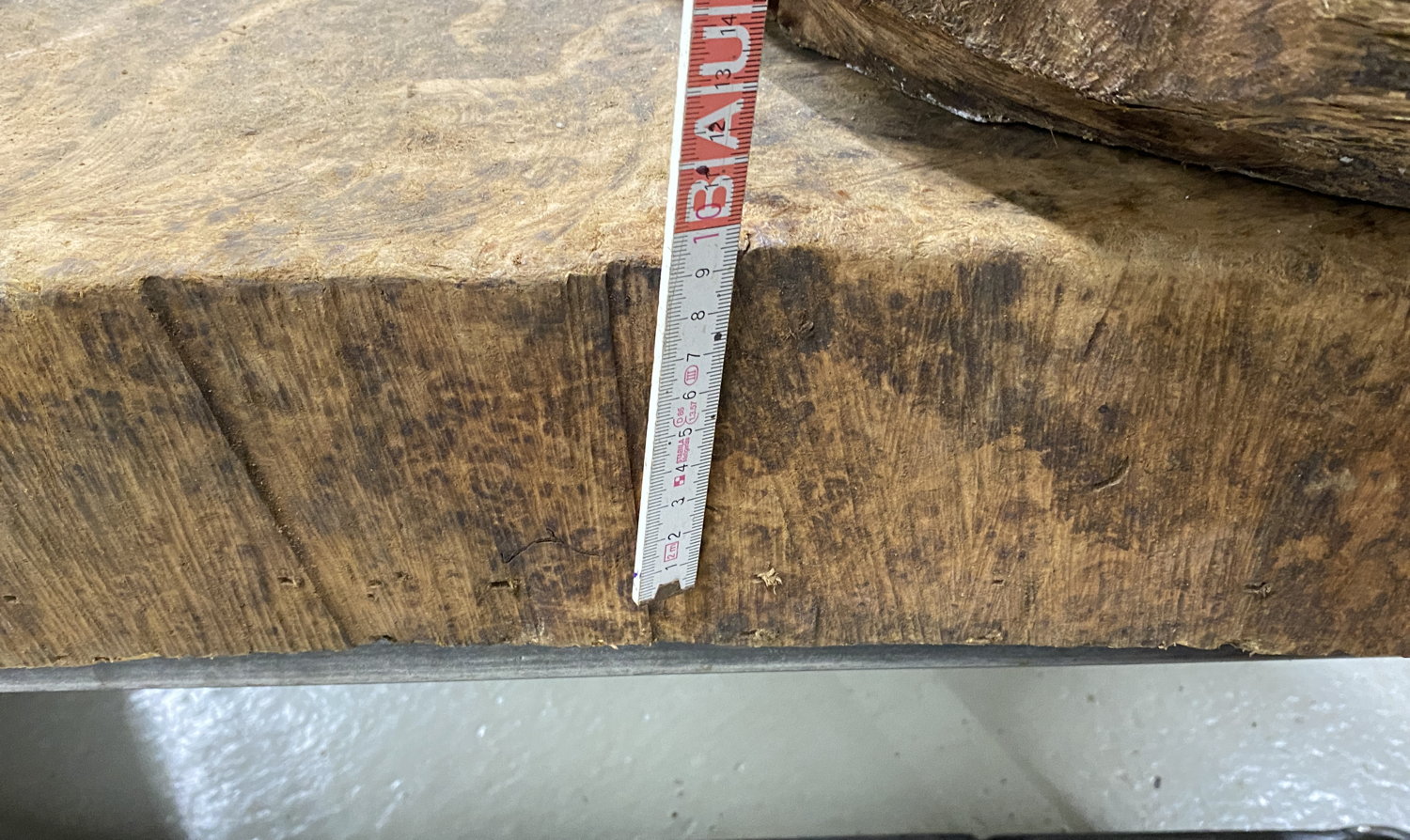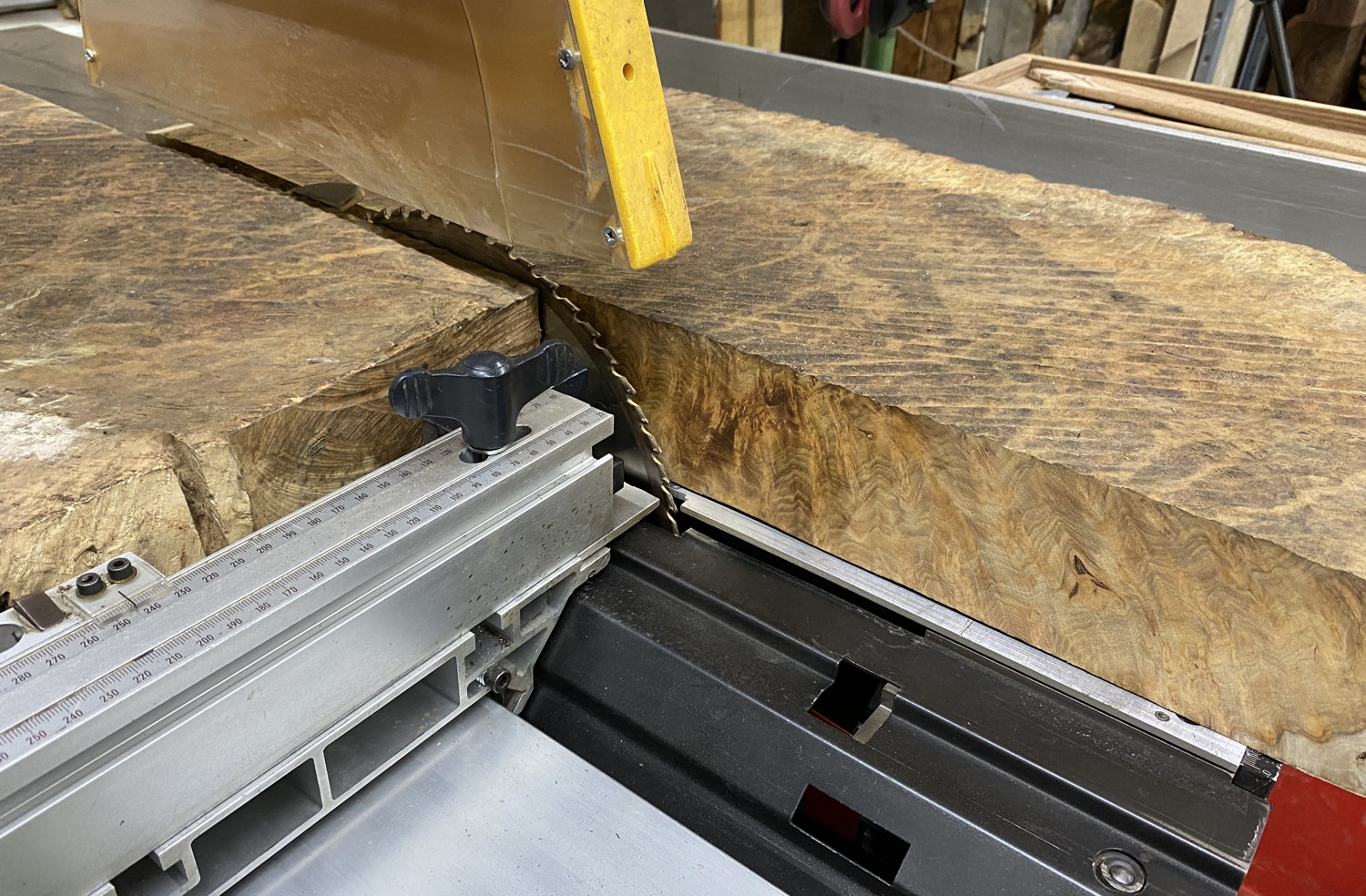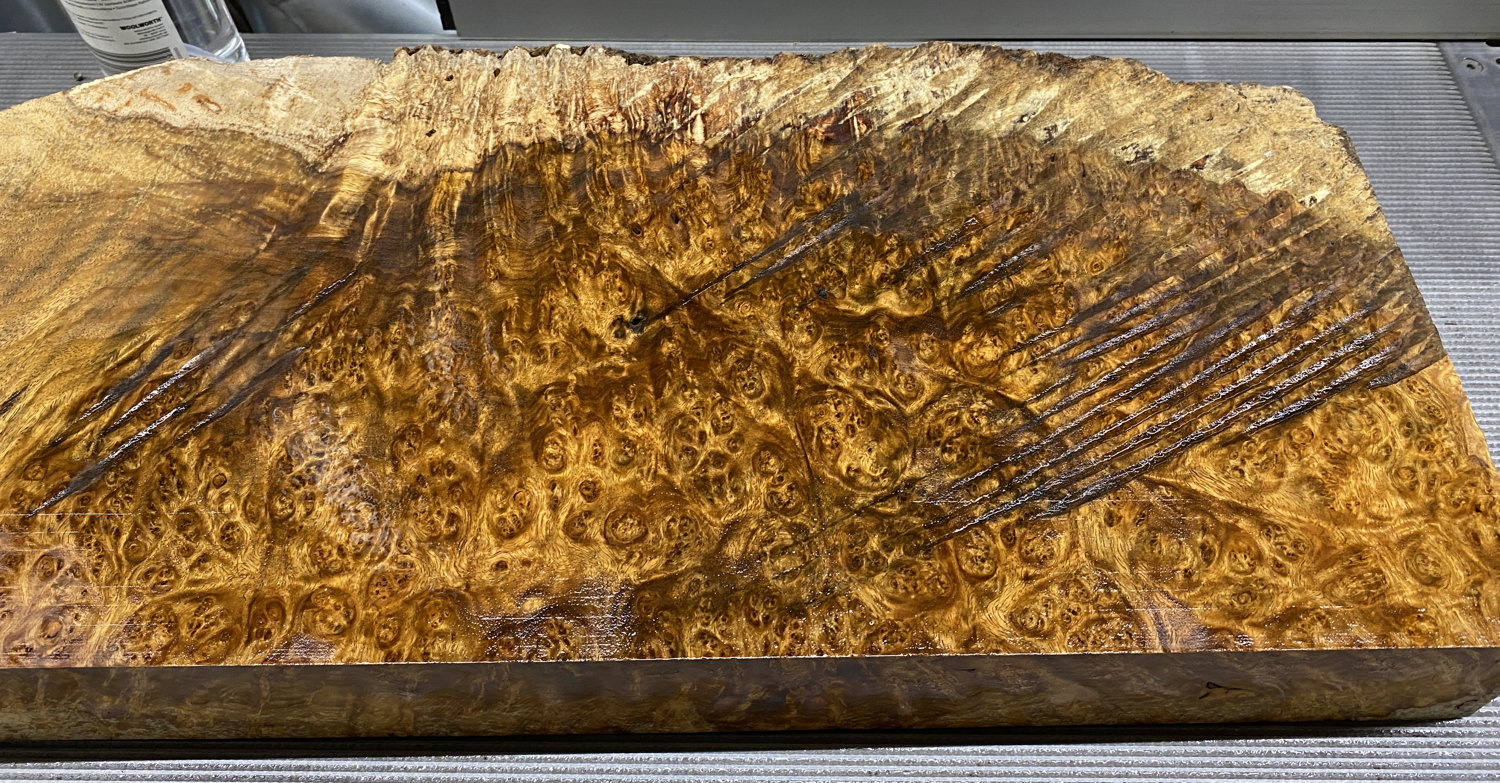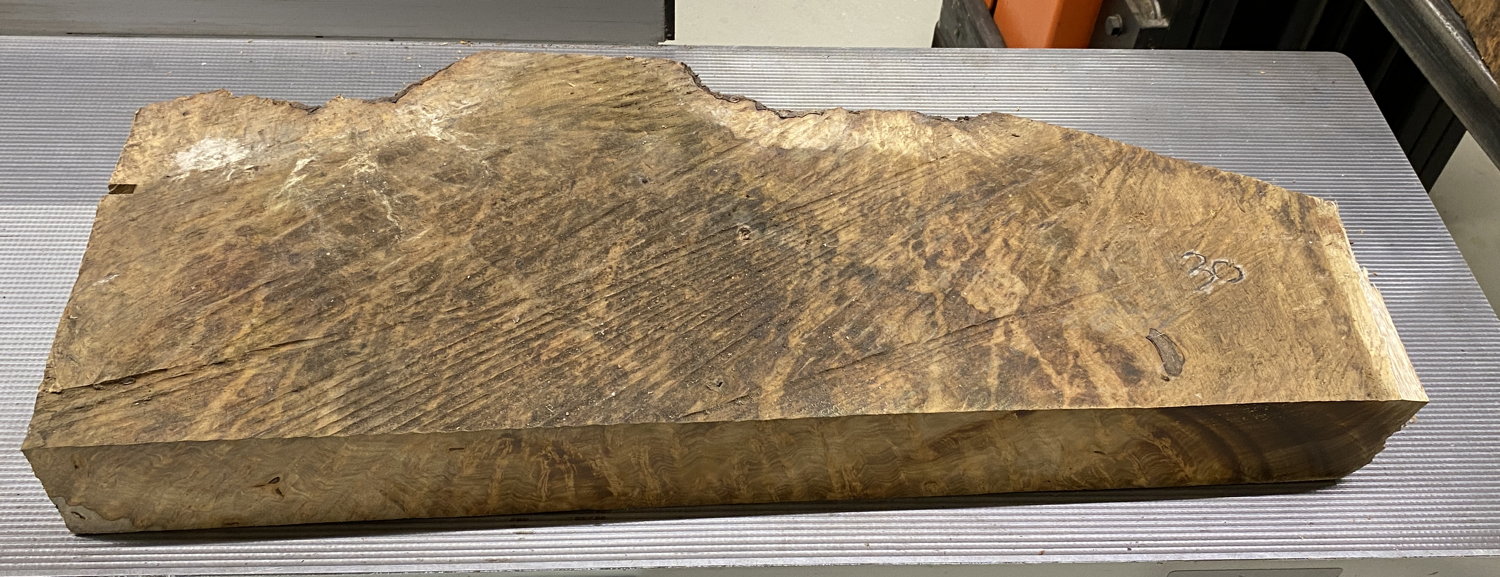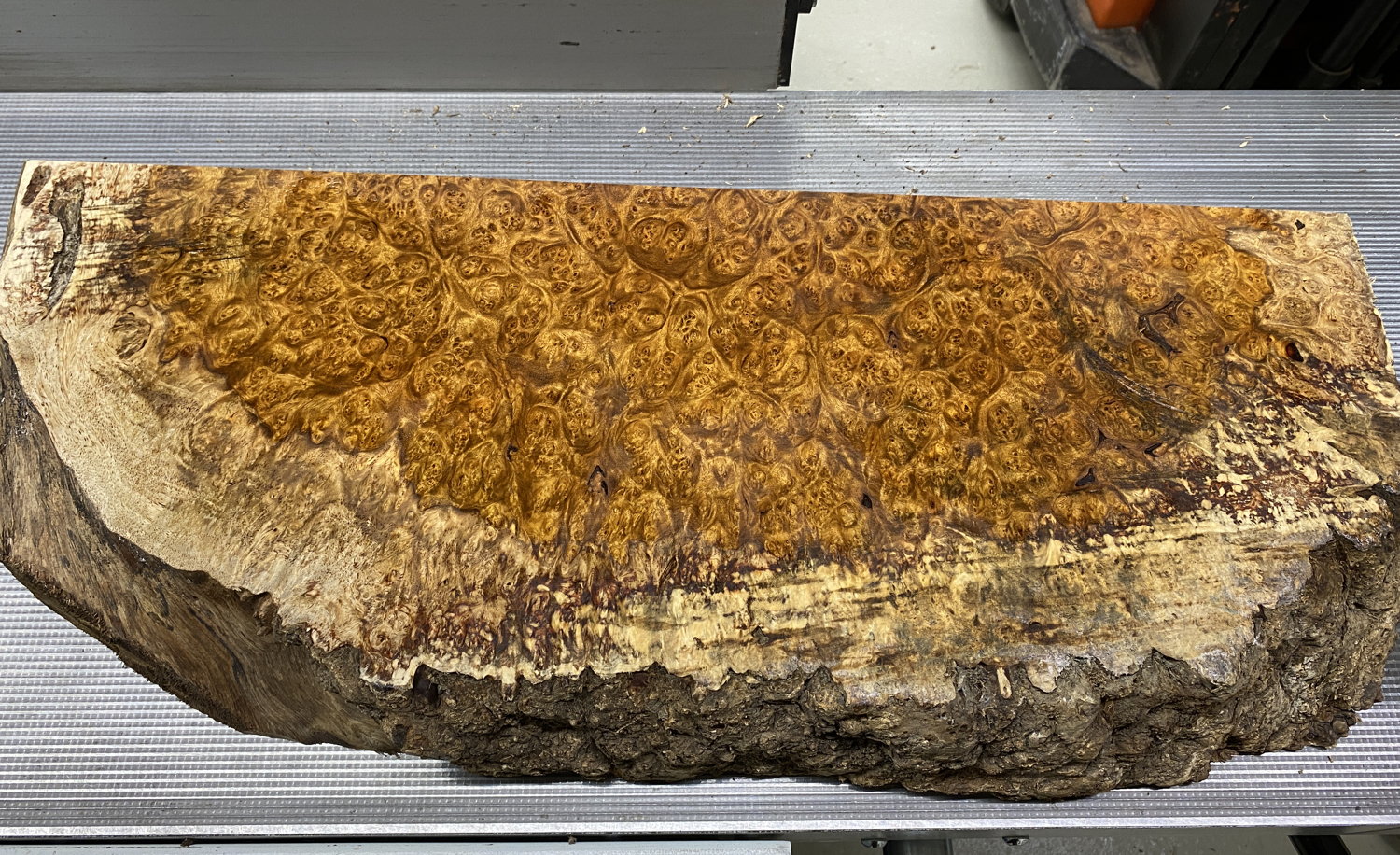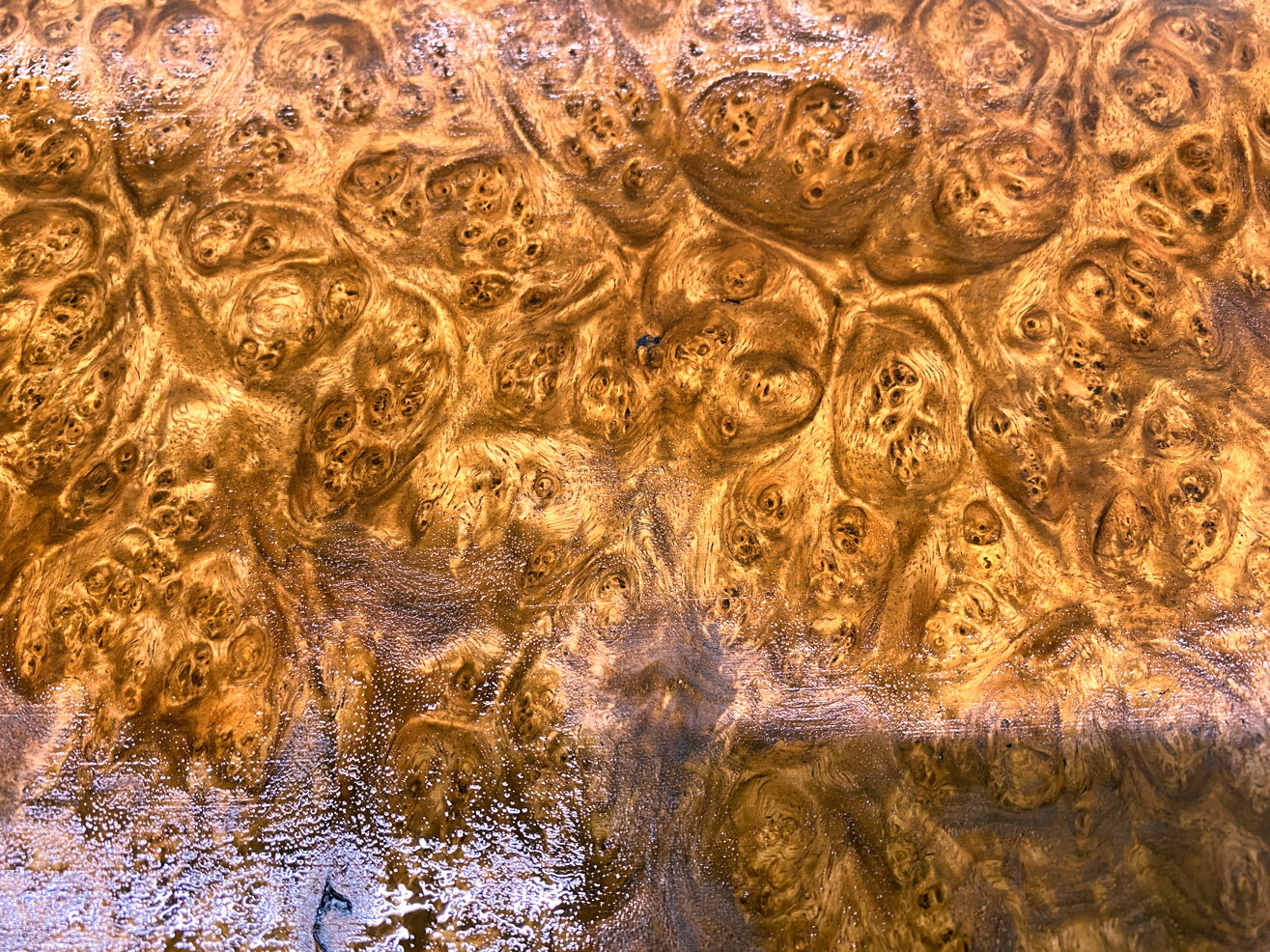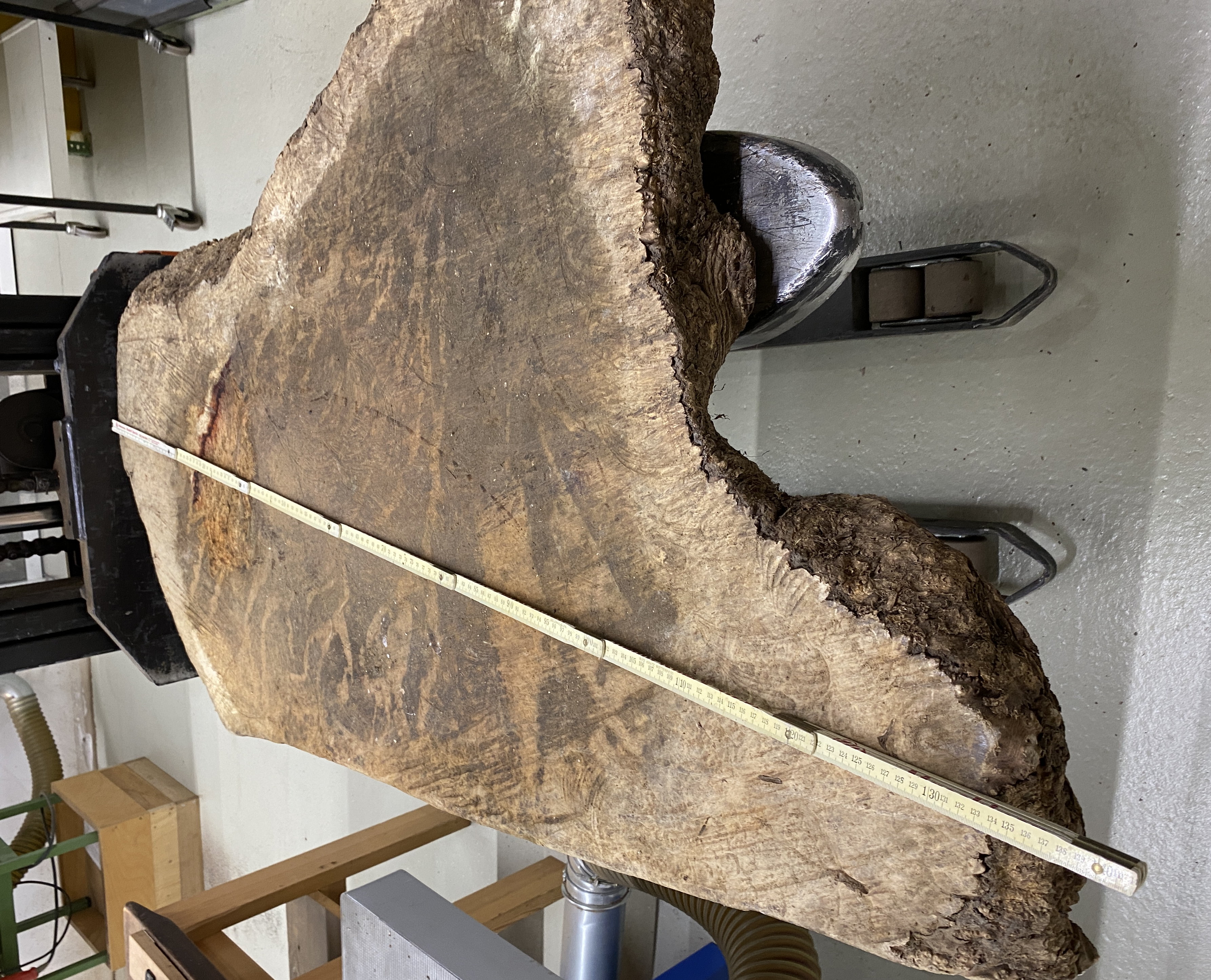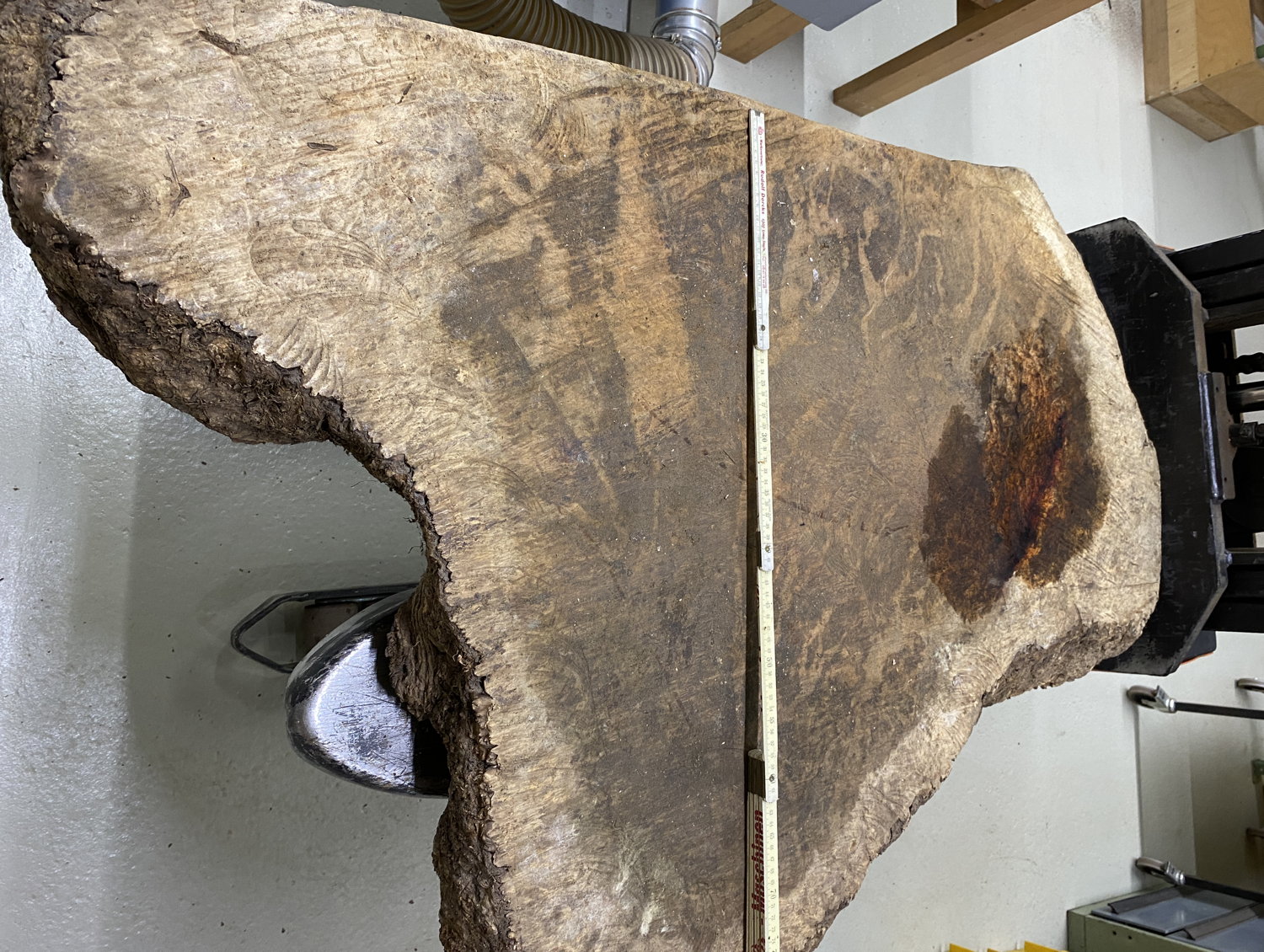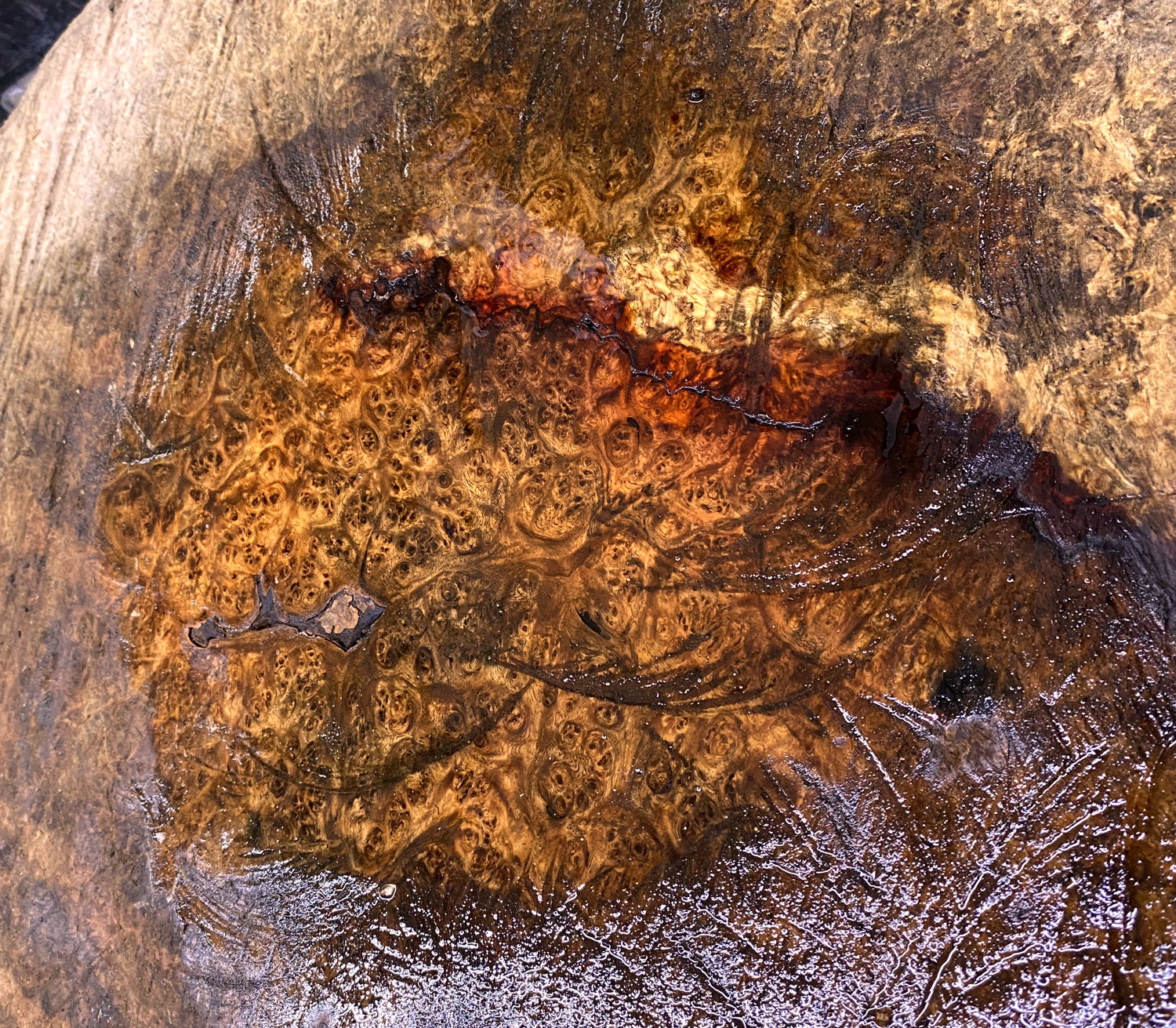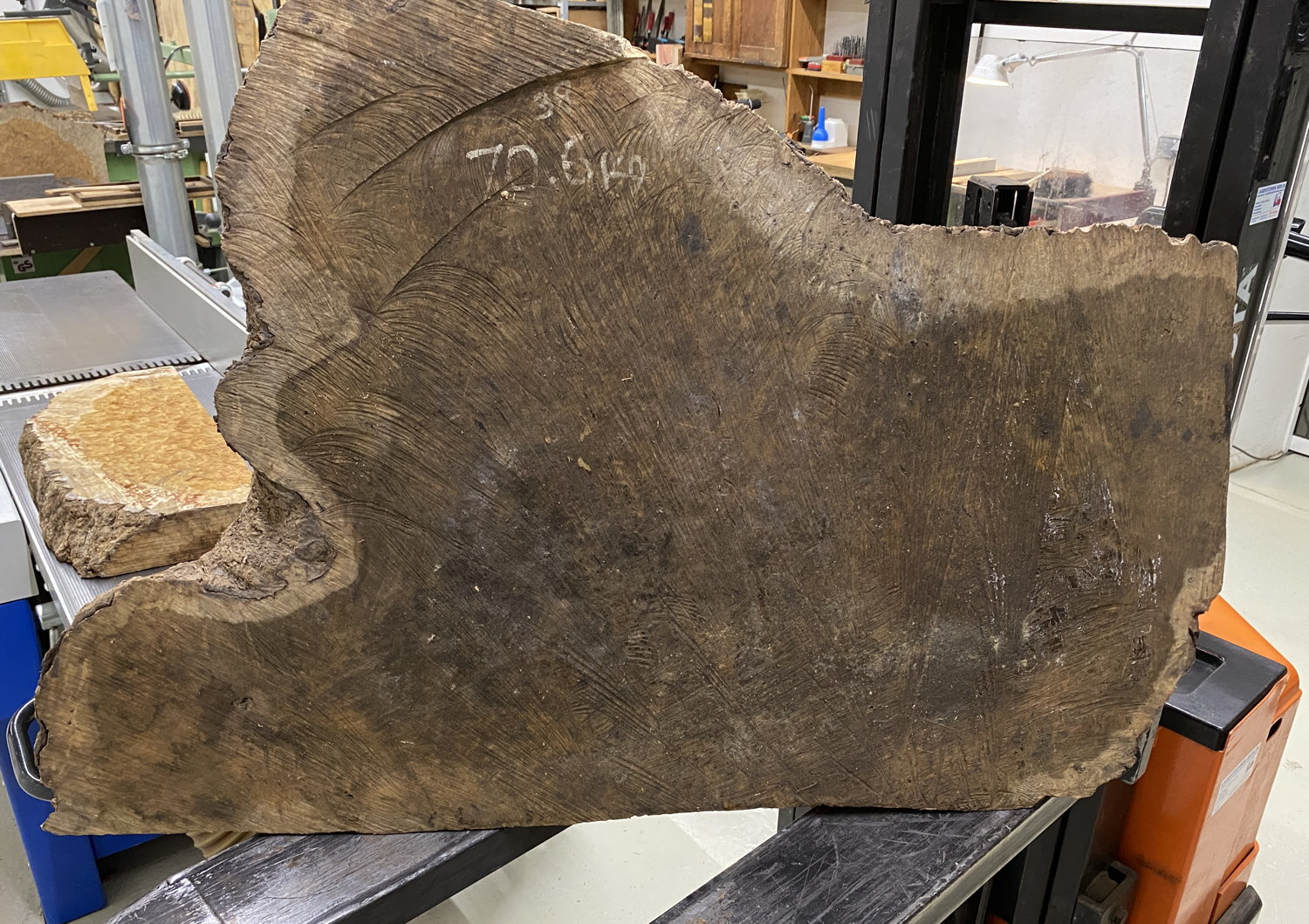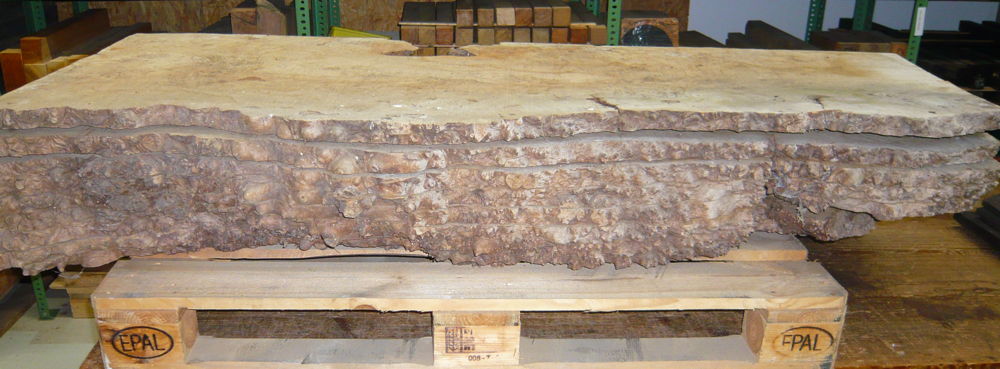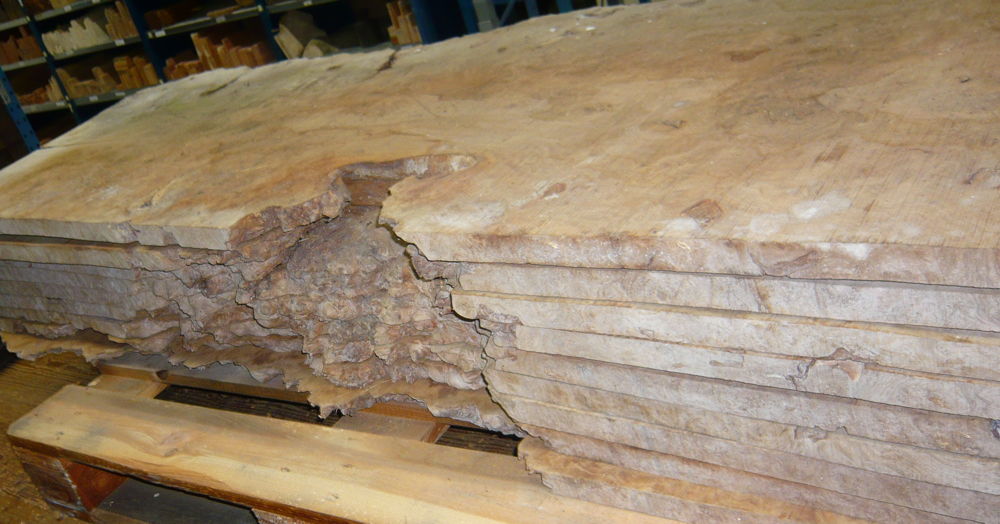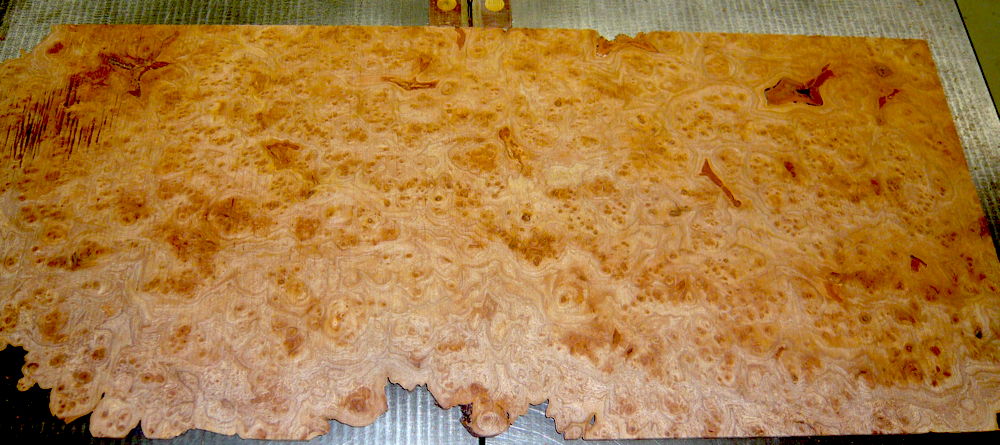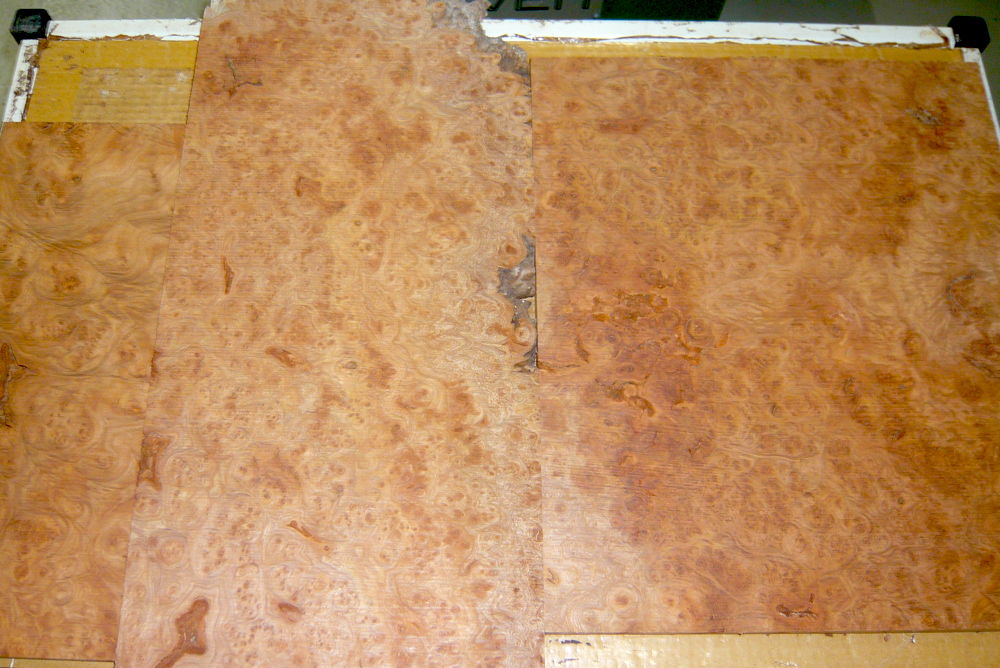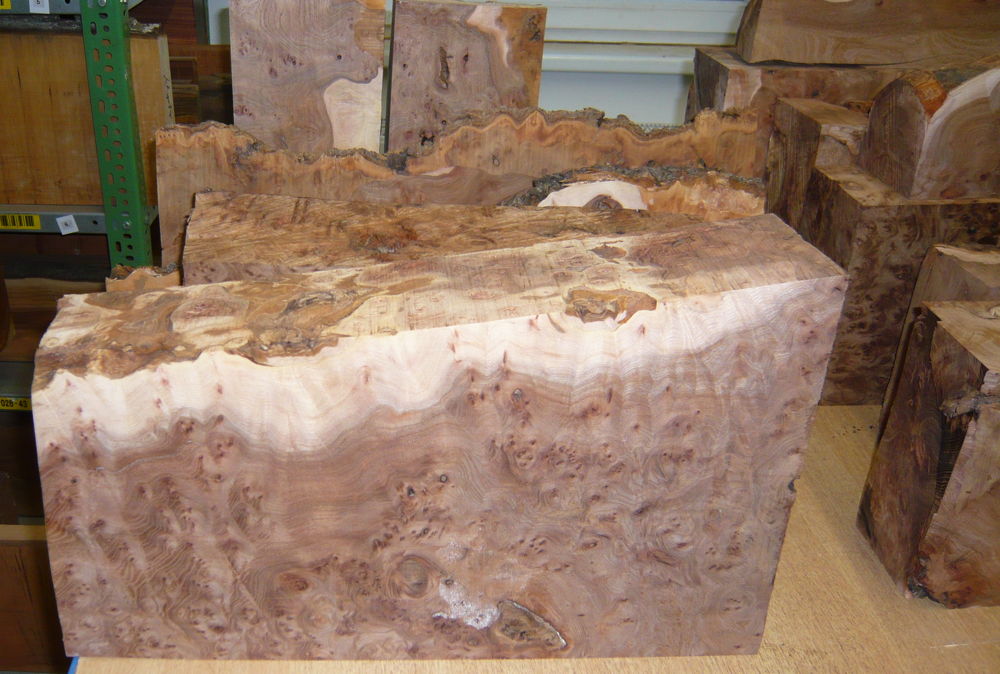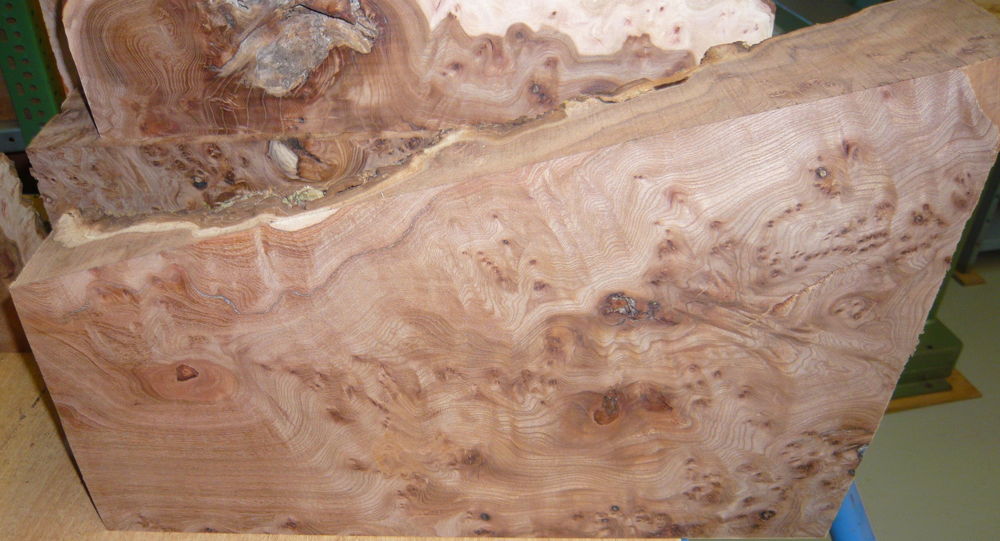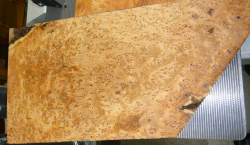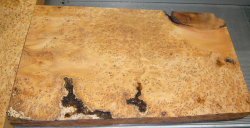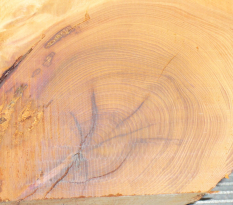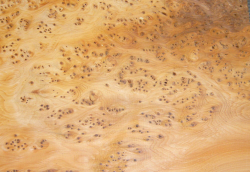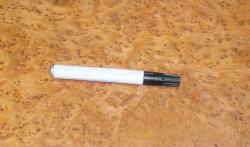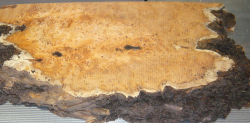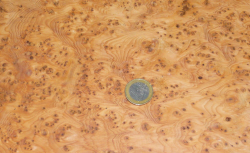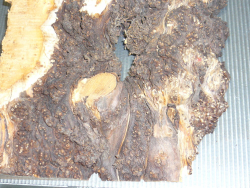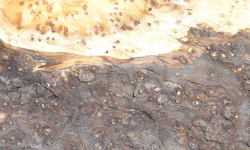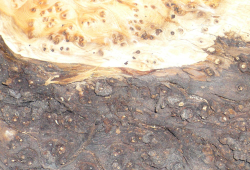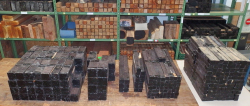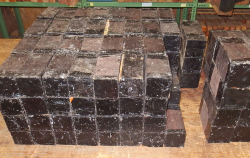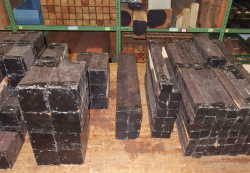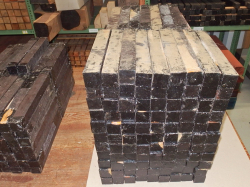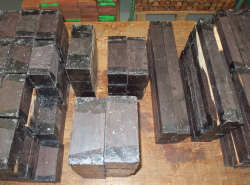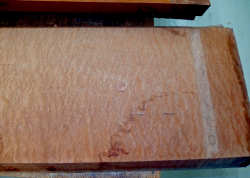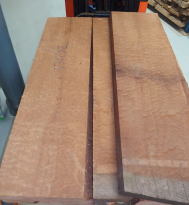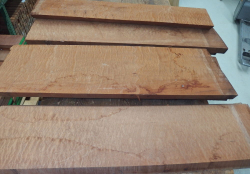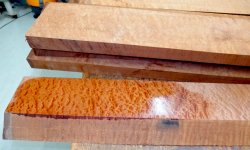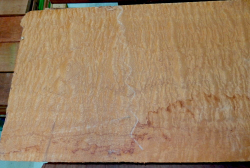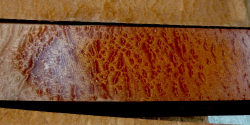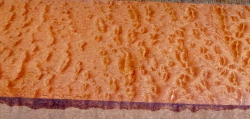Shipping country
Wood Species
News
At the end of the year, we were once again able to get hold of a small batch of ultra-fine curly birch from Karelia. A special whim of nature allowed a few small birch trees with this special growth to grow high up in the north under the most adverse conditions, and although we have been trading in wood for over 40 years now, these small trunks are an extreme rarity: Karelian curly birch grown this fine and dense will only rarely be found.
We were all the happier when this small quantity reached our trade, as it is very rare to find anything like it, and to be able to buy such wood from the wood-crazy sellers in Finland at a reasonably realistic price requires a great deal of luck and trust.
This extremely hard wood, which is rarely found in our latitudes, is something special: it is very strongly marbled, has a light yellowish basic color and is interspersed with clearly contrasting dark brown stripes. It grows in Dutch Guyana, Surinam and even there only very sporadically in large stands of other trees. As it is rare and highly sought after, the wood is not always easy to obtain, but we have managed to find and buy a somewhat larger quantity of very high quality wood from an old stand. The recurring problem with this wood is the often sudden cracks, knots or defects in the middle of the wood, which clearly determine the quality. This old batch of Serpentwood, which is also known as Angelim Rajado or in Surinam as Surinamse Bostamarinde, is of surprisingly good quality, it has very few of these typical defects and also has a good and fine grain. We are delighted to be able to offer this rare specialty to our customers all over the world!
The special feature of ash maple burl is a unique, often fiery red color inside the trunk. This discoloration occurs as the tree tries to defend itself against invading fungi and produces these unusual colors, which can be clearly seen with lines of defense of the healthy wood against fungi and other wood-destroying parasites. In the case of the tree from which these beautiful pieces of burl wood comes, it was as often can be seen: the entire trunk was completely decomposed on the center, only a 15 - 20 cm thick layer of the finest burl wood supported the whole tree, and as a result of a storm this old tree then fell this year.
We were the lucky beneficiaries of this tree fall, the particularly beautiful burl wood is now drying in our warehouses and will probably be dry enough next year to be available in our webshop.
Such a discovery is often like a journey back in time, because you uncover treasures that were nothing so special some fifty years ago, but are now a real rarity that is rarely offered for sale and even more beautiful.
That's what happened to us with this find in France: a few very large, very thick and very dusty slabs of an initially unknown burl wood were found there, and careful attempts at planing revealed a beautiful grain, but what kind of wood it was initially remained in the dark. However, once the smaller boards had been cut in half in width to fit over the jointers width of 45 cms, the joy was great; a beautiful warm golden-yellow wood color emerged, and the grain had a strong three-dimensional effect, looking unreal for a flat surface. With a little white spirit sprayed on, you can get an idea of the deep structure and color that a finished product made from this wood will one day have. A scientific determination of the wood then revealed that it belongs to the Pterocarpus family, to which the red Amboina burl wood also belongs, but in this case it is a wood known as golden Amboyna or Moudui burl, it comes from South East Asia, Thailand and Laos are its natural growth areas. We don't need to emphasize how happy this find and its beauty make us, and we are also delighted to be able to offer this unique feature to our customers all over the world!
Chestnut burl wood is certainly one of the most beautiful domestic woods, and it has nothing to hide behind any other burl wood. Its silvery, shiny surface, its extremely fine grain and its beautiful whimpering growth make it a real eye-catcher among domestic woods. In this wood, fungi cause a very noble and wild discoloration, which, for example, in Buckeye Burl, the Californian close relative of our native chestnut, leads to spectacular plays of color in the wood. Our wood has also produced some beautiful plays of color in a light blue-grey, unfortunately not as pronounced. On the other hand, the fine grain is really spectacularly beautiful, with almost no defects or bark ingrowth, and the almost ubiquitous cross-grain and very fine whimper growth give the wood a fine, elegant character. We are delighted to finally have this beautiful wood in our range again.
PS: if you ever see a chestnut with a large burl, or better still a trunk whose entire surface is covered with such burl growth, please get in touch with us, we are very happy to buy such wood and also pay well for the wood or a tip on such wood!
In 2014 I was able to buy some slabs of a huge burl of elm wood, which is strangely called elm tree while alive, but after felling and sawing the wood is called Rüster here in German. These large slabs are a type of elm wood, which unfortunately I have not yet been able to classify more precisely: there are three types of native elm trees, the wood of which is probably quite different: The fluttering elm or white elm (Ulmus laevis) , the field elm (Ulmus minor, syn. Ulmus campestris) and the the wych elm or Scots elm (Ulmus glabra). Most elm burls are rather coarse-grained, develop strong cracks during drying and typically have large holes, bark and stone ingrowths and other defects that make it difficult to process. Not so these planks cut from a huge burl trunk, whose wood is finely grained, has very few defects, cracks and holes and is generally lighter in color than the red elm heartwood, which is quite dark. I suspect that this wood comes from the fluttering elm, but I am not sure. Expert advice on how to distinguish between these three species on the basis of their wood is very welcome here!
In the meantime, I bought other even larger burls, which turned out to be much more difficult wood. Cracks, bark and stone ingrowths, coarse structure, enormous warping during drying, the whole package of properties that are not appreciated in wood. And now back to 2014: at that time I was able to buy some slabs that came from this above-mentioned batch, and I didn't even realize how lucky I had been with the beautiful and very low-defect quality of this burl. And any sane person would hardly dare to hope that after such a long time, almost exactly ten years, the rest of the burl boards from 2014 would still be available. After a few phone calls, emails, photos and patience, I then realized that the rest of these magnificent burl slabs still existed in an airy attic and I was able to buy this batch for our company Edelholzverkauf. So now you can find plenty of supplies of this beautiful wood in our elm wood category and the supply for the next few years should be secured!
All these features are present in the thick slabs of wood that were revealed after sawing a yew burl and I must say that I am always amazed by so much beauty, fine grain, swirled and intertwined finest growth rings in this wood. The thick branch on the 5th photo gives an idea of how many annual rings this branch alone has; it has probably been growing for almost 100 years. Take a look at the pictures and I hope you can share my enthusiasm for this special precious wood!
The last photos show in detail the fine shoots under the thin bark of the yew and their appearance in the wood on the planed surfaces.
Sometimes purchases can take a whole year ... that's about how long it took until we were finally able to buy this rare batch of really old grenadilla or African blackwood scantlings for woodwind instruments.
For some years now, this wood has been very difficult to obtain and has long delivery times, and it needs to dry carefully for at least 5 - 10 years before it can be further processed into components for clarinets, oboes, flutes or bassoons.
This wood has been on the Cites list since 2017 and since then may only be traded with certificates of origin that serve to protect this valuable wood. As this wood only grows endemically in northern Mozambique and southern Tanzania, there are no alternative areas with these trees. In addition, violent clashes between the army and armed fighters have been taking place in this region for years, making legal exports even more problematic. Export ports were temporarily occupied by jihadists, all of which makes the procurement of good tonewood scantlings from Mozambique almost impossible, and instrument makers are forced to use substitute woods, which many musicians and instrument makers do not consider to be of equal quality.
After a long period of preparation and negotiations, we have now been able to purchase this small batch of old tonewood scantlings, CITES permits have been issued for them and our customers can now buy grenadilla that was imported around 8 years ago and has been stored in warehouse conditions ever since.
There are scantlings for piccolo flutes, clarinets, oboes and bassoons, many barrels, bells, upper and lower joints, tops and bottoms are amongst and there are certainly also formats for uilleann pipes and other bagpipes. You will find these offers in our Grenadilla or African blackwood category!
In France, the term pommelé has become firmly established, which can only be inadequately translated as tufted. In France, as in England, there are many very descriptive terms for such growth abnormalities, which are very rare and therefore traded at a high price. This mahogany from Africa is Sapeli (Entandophragma cylindricum) and it has a really stunningly beautiful special grain that looks three-dimensional and very haptic.
We are delighted to be able to offer our customers something from this special wood and individual pieces will gradually be added to our webshop!



